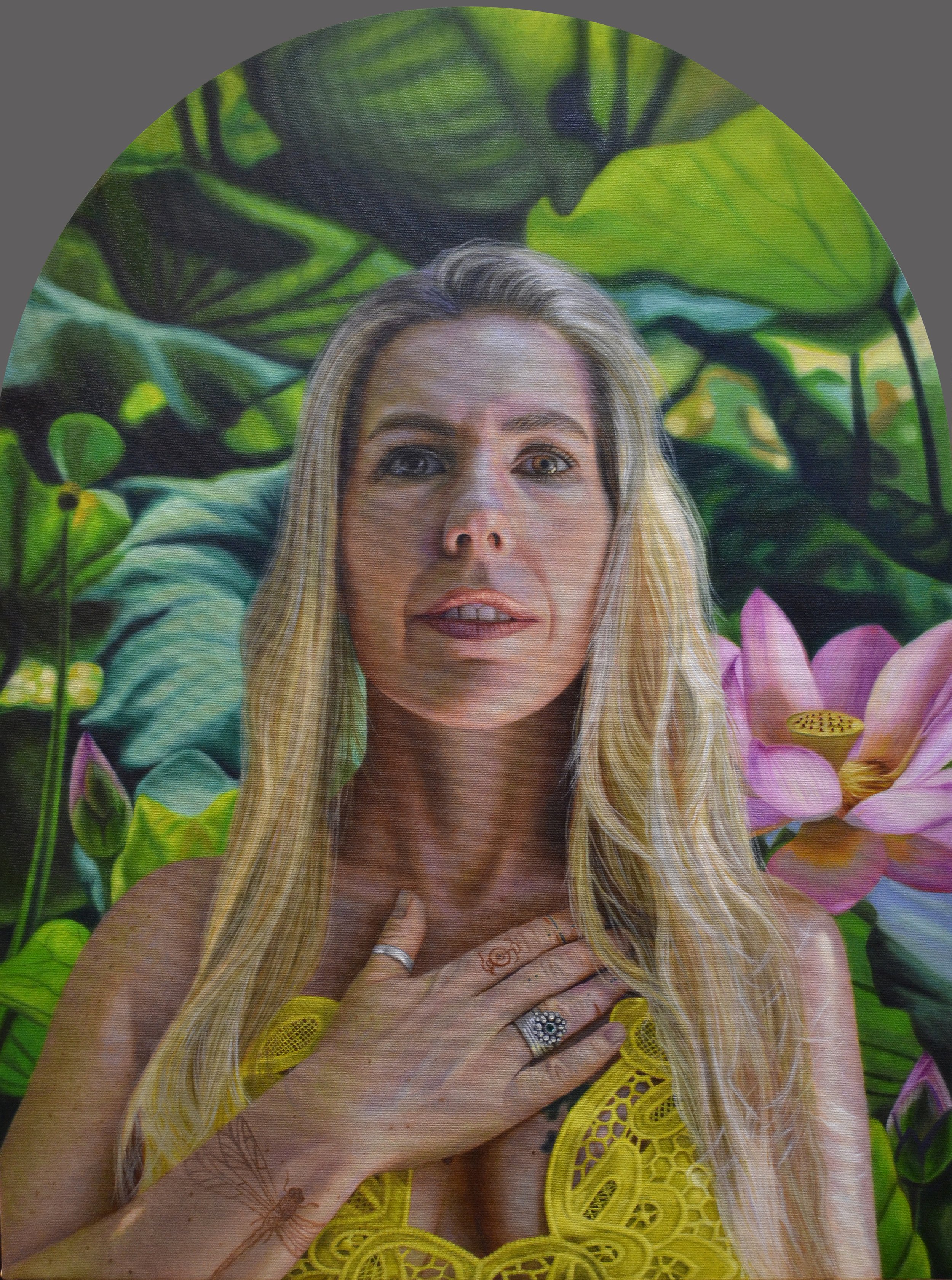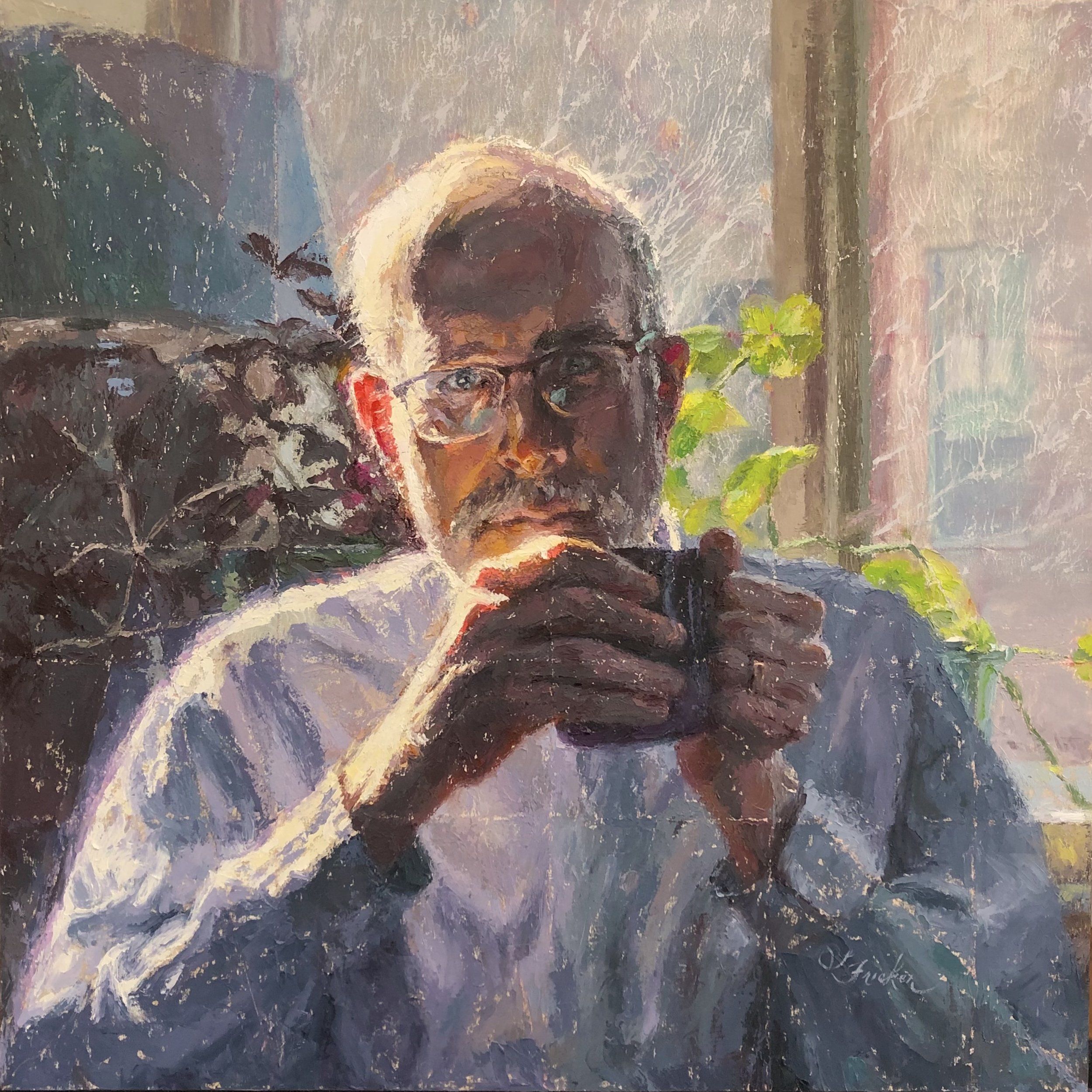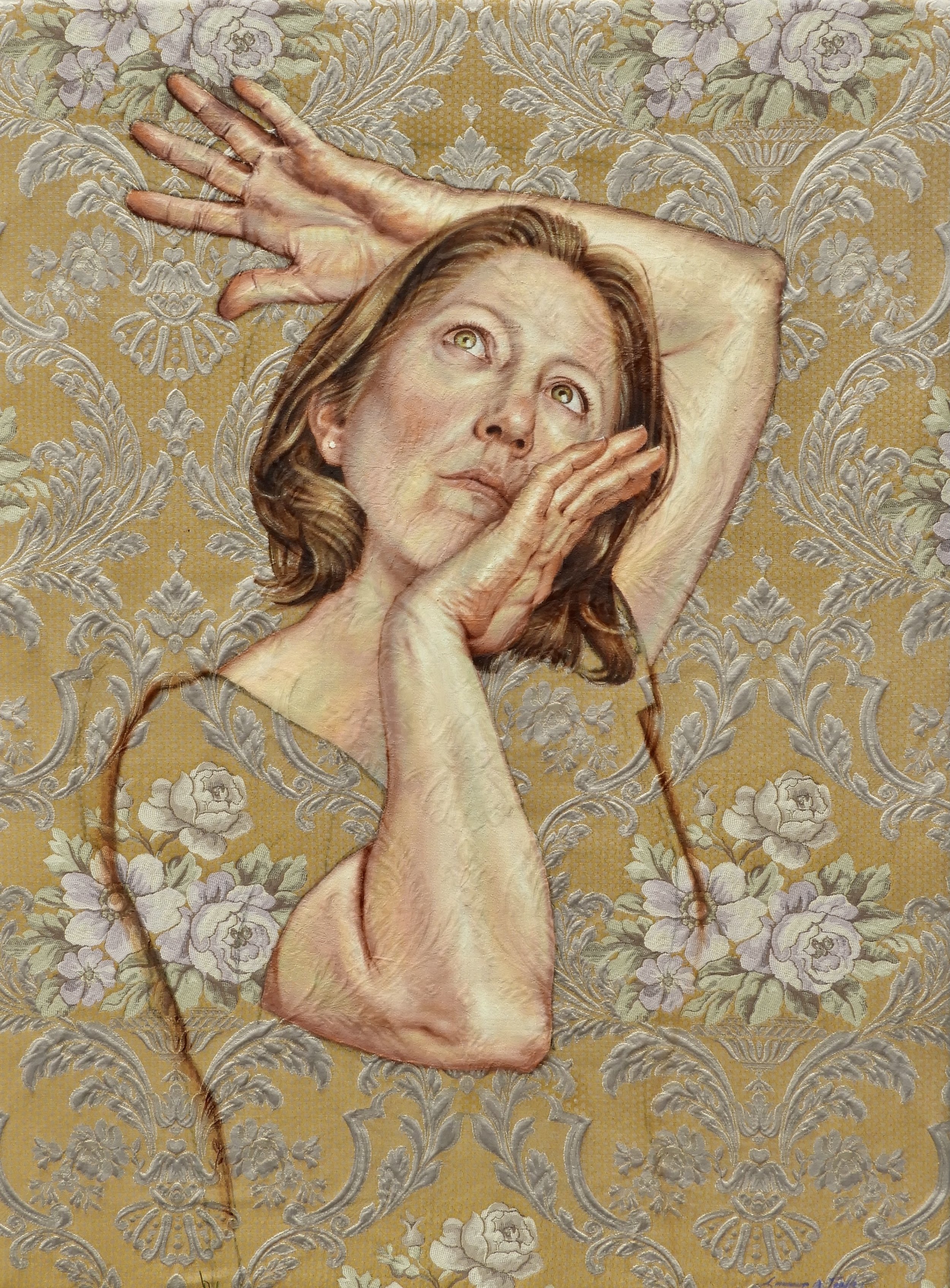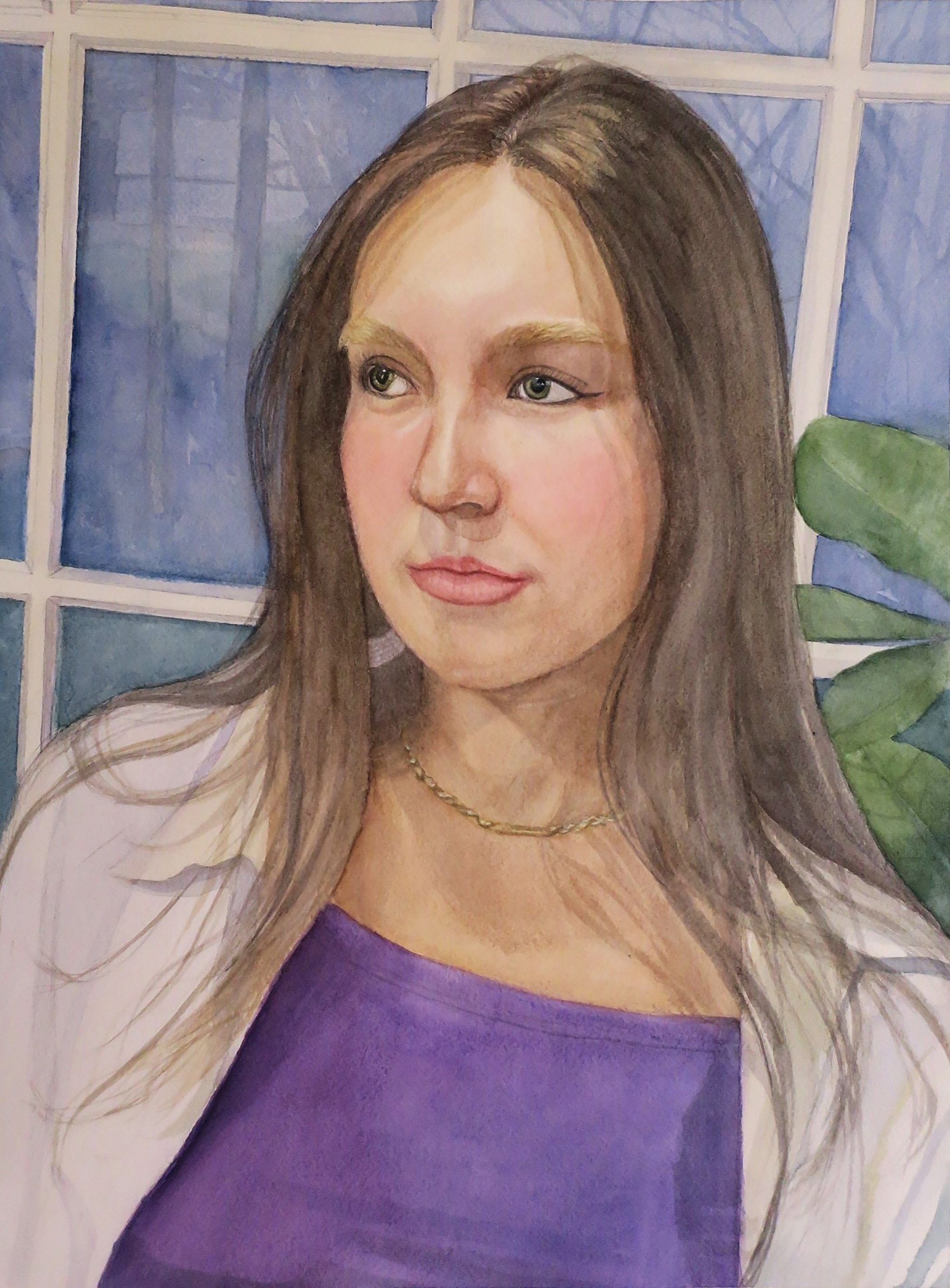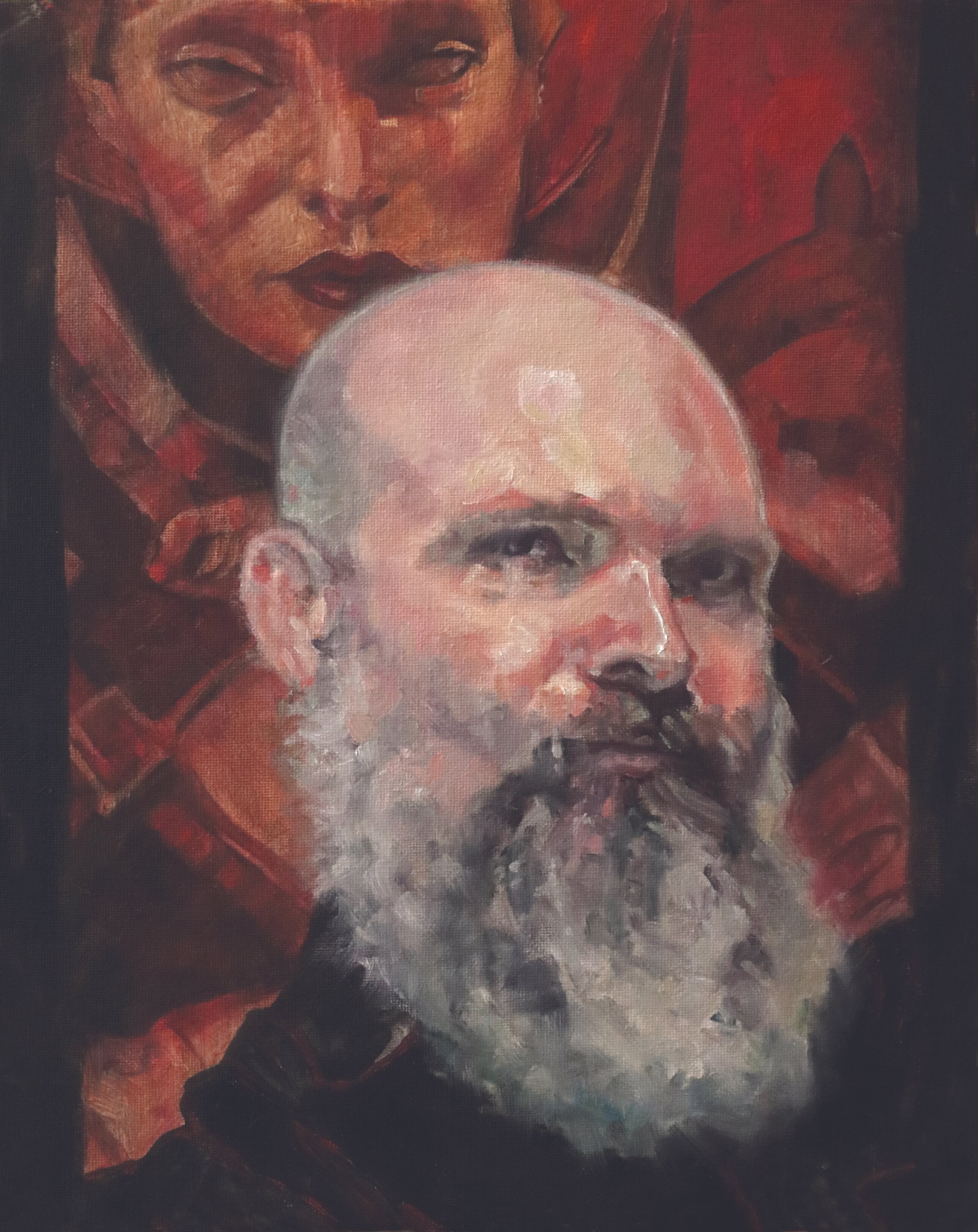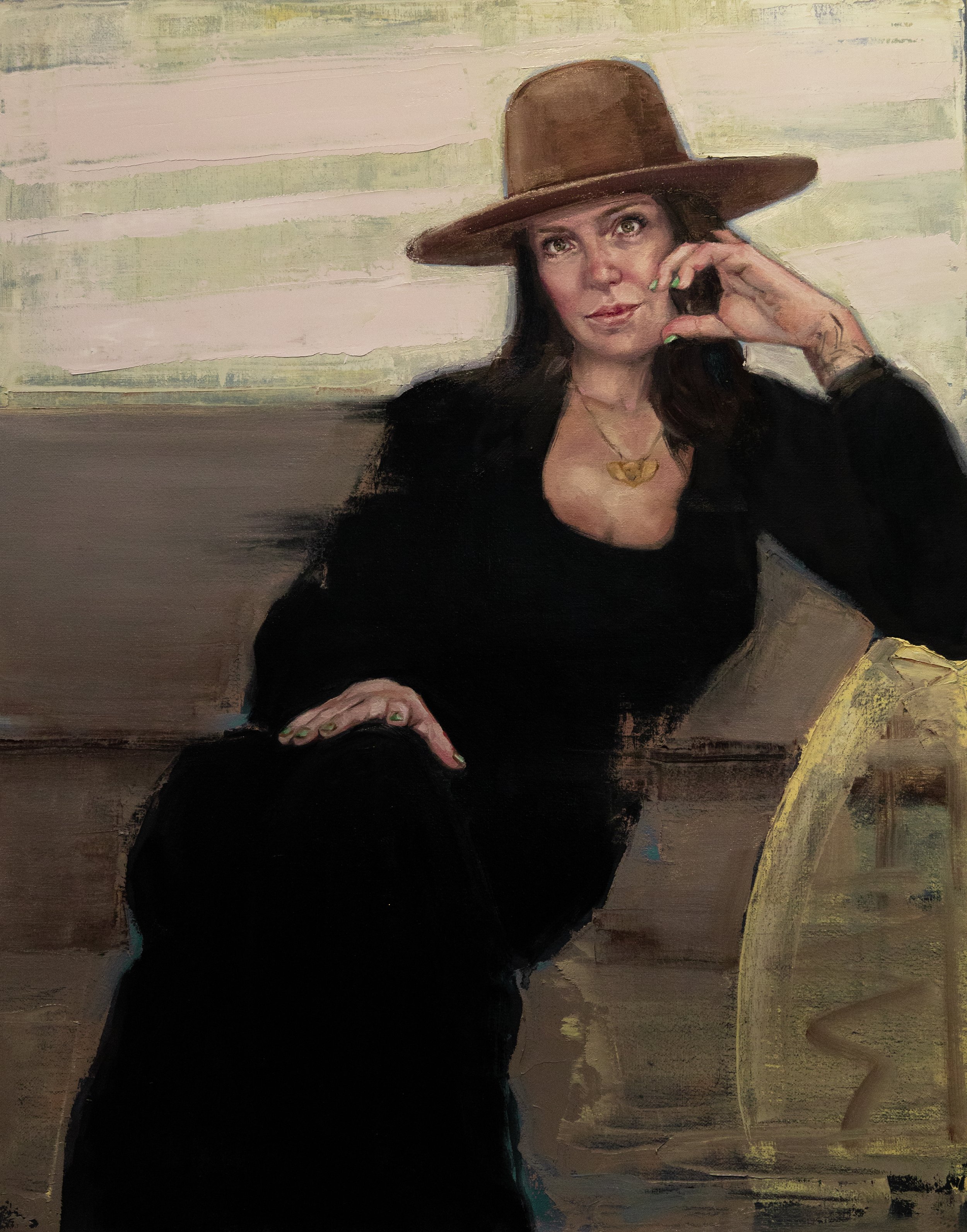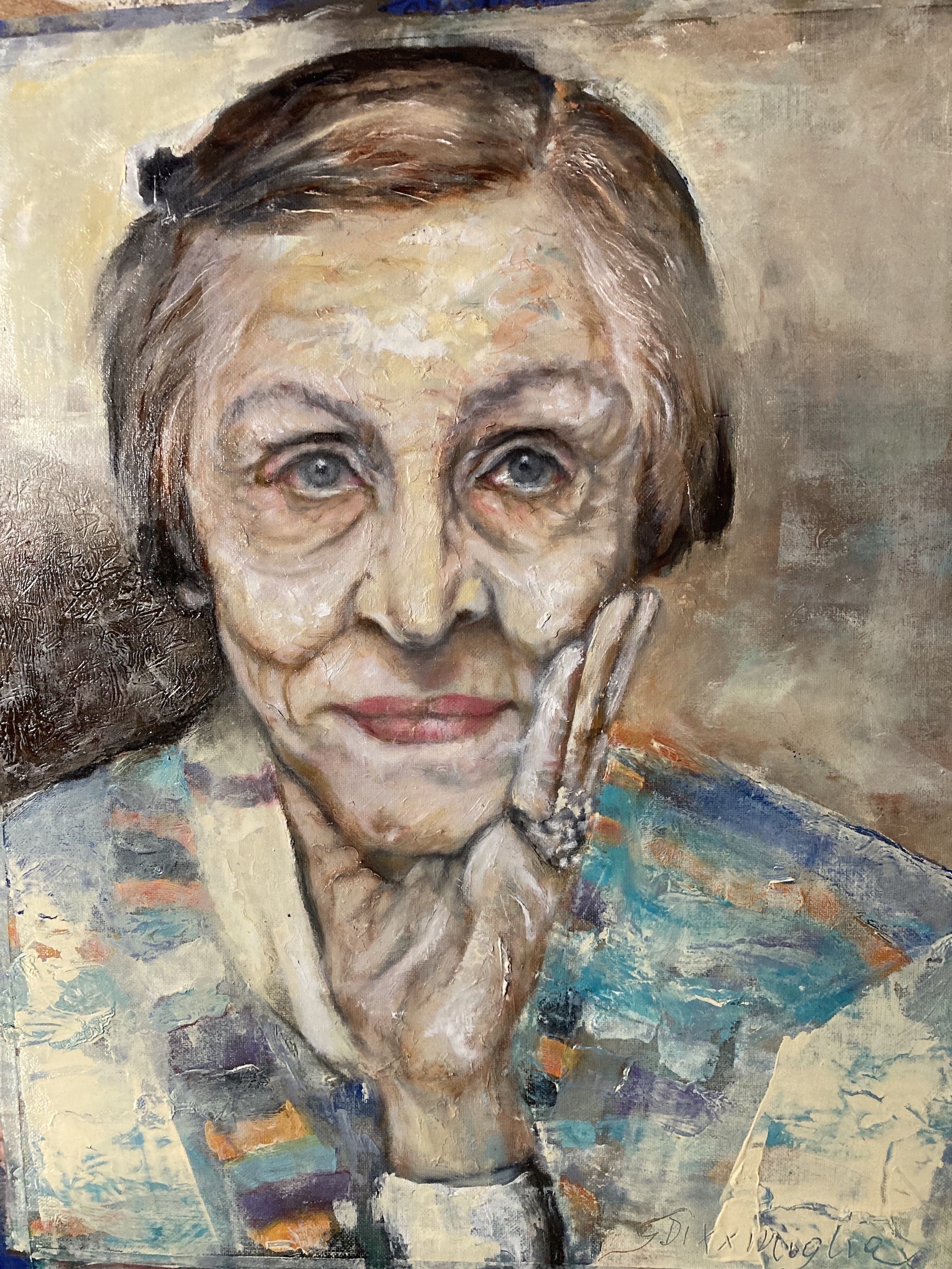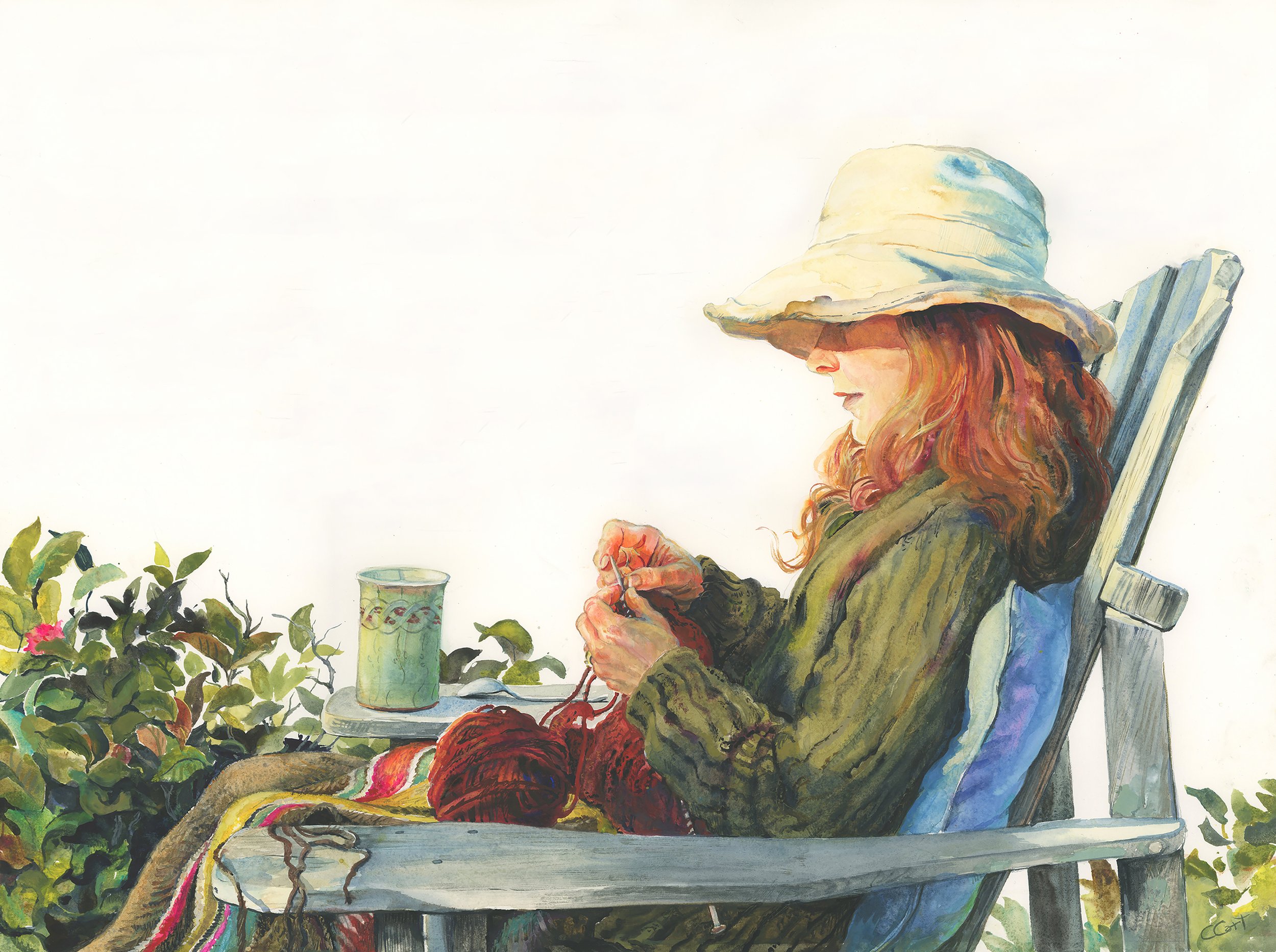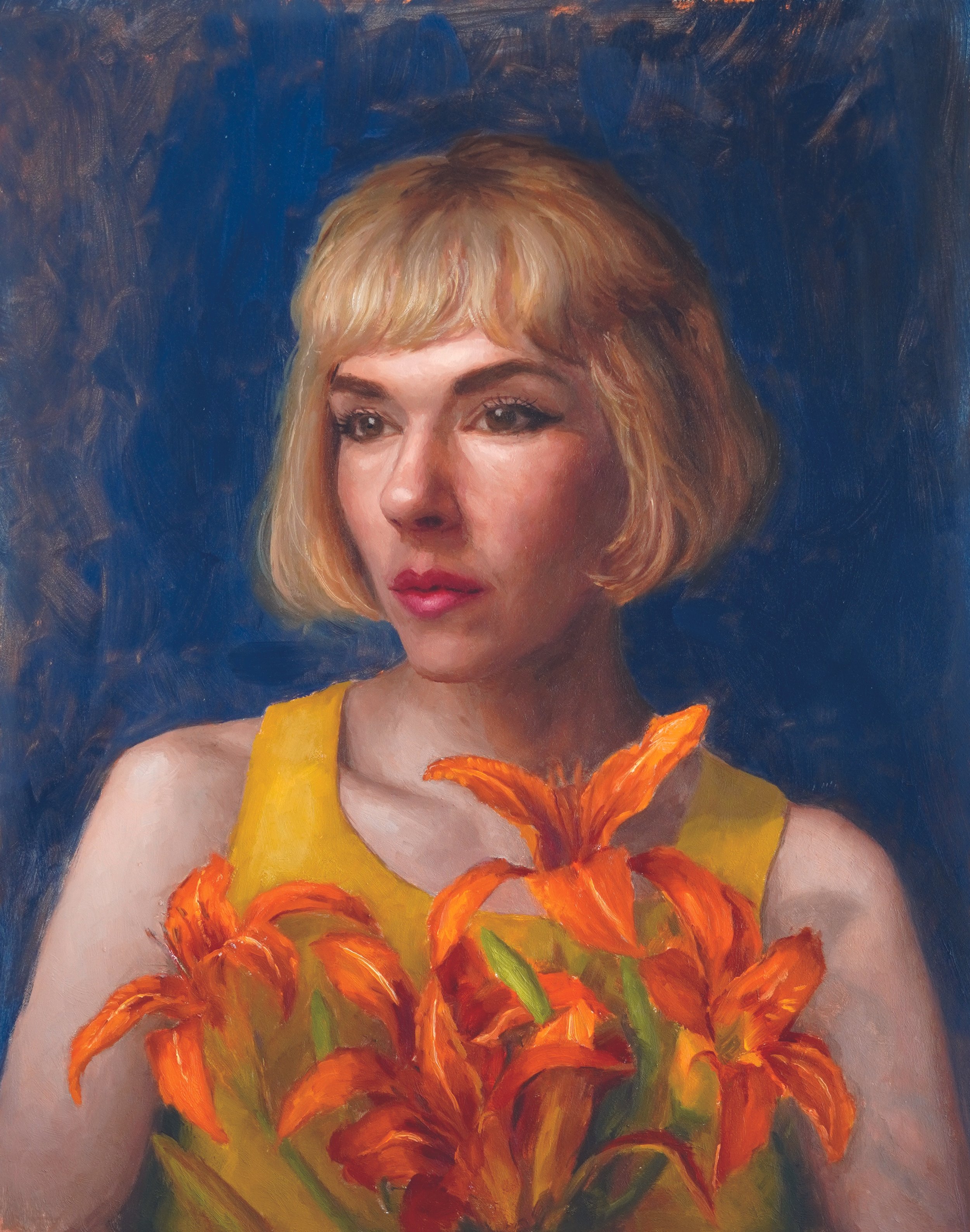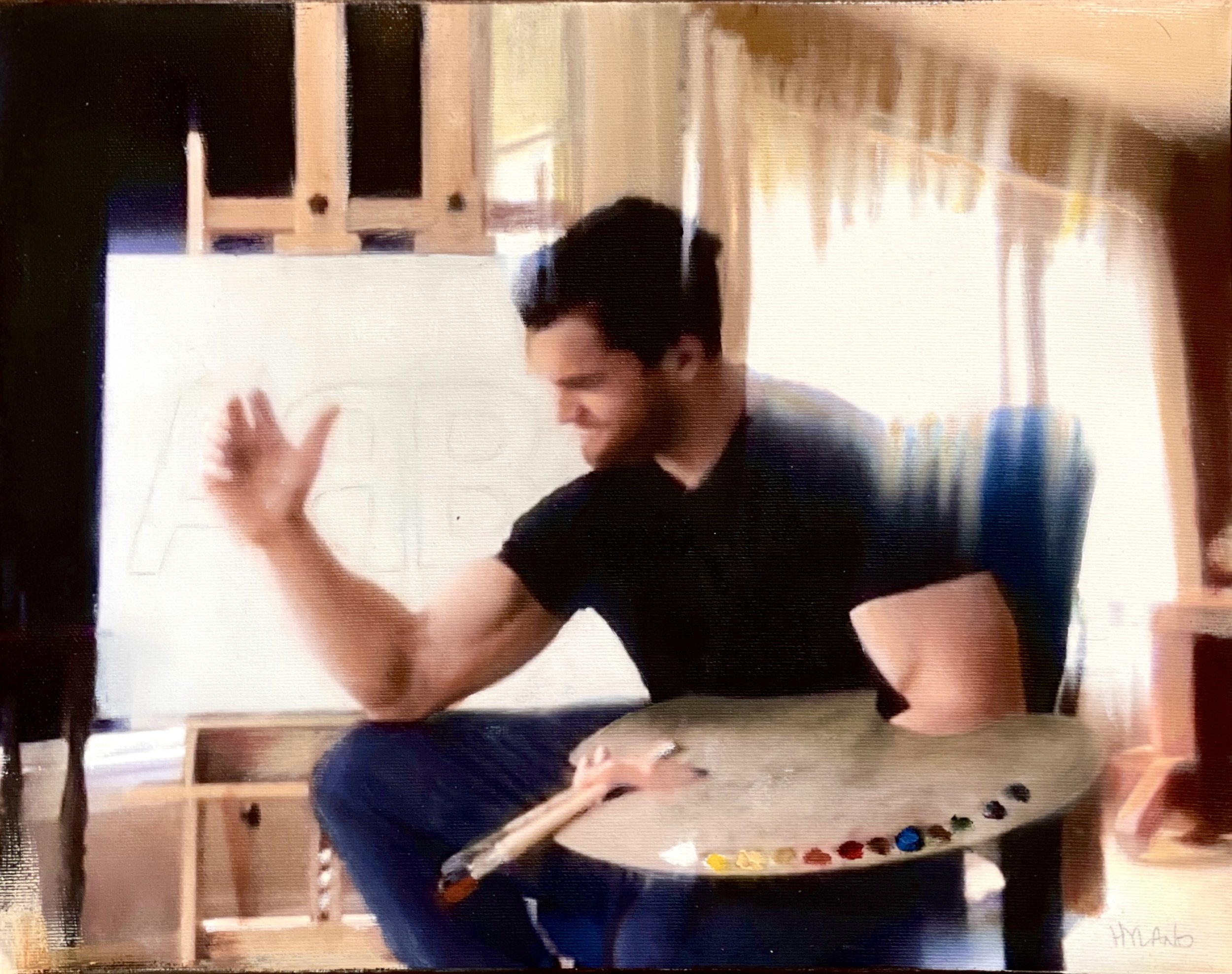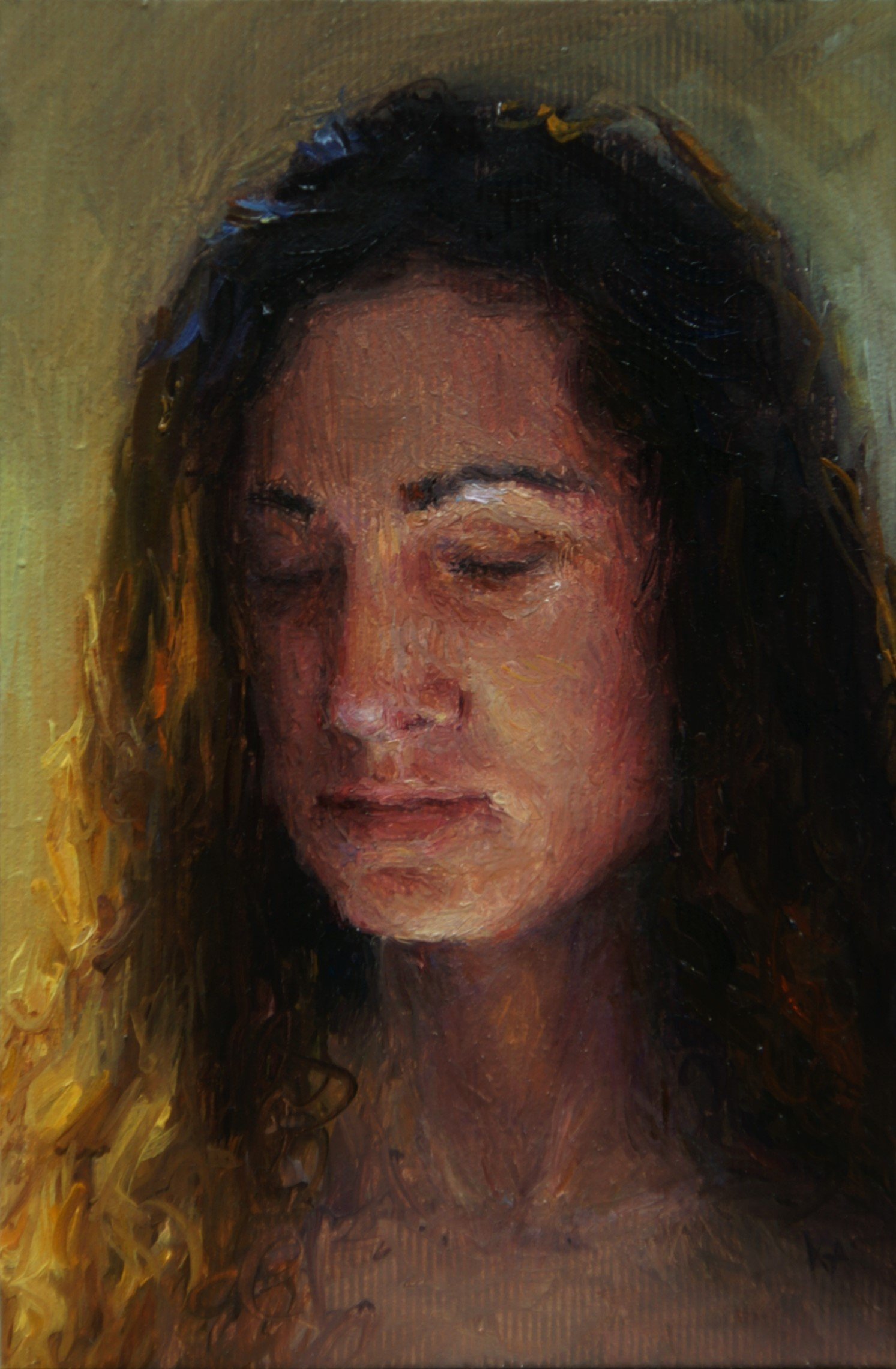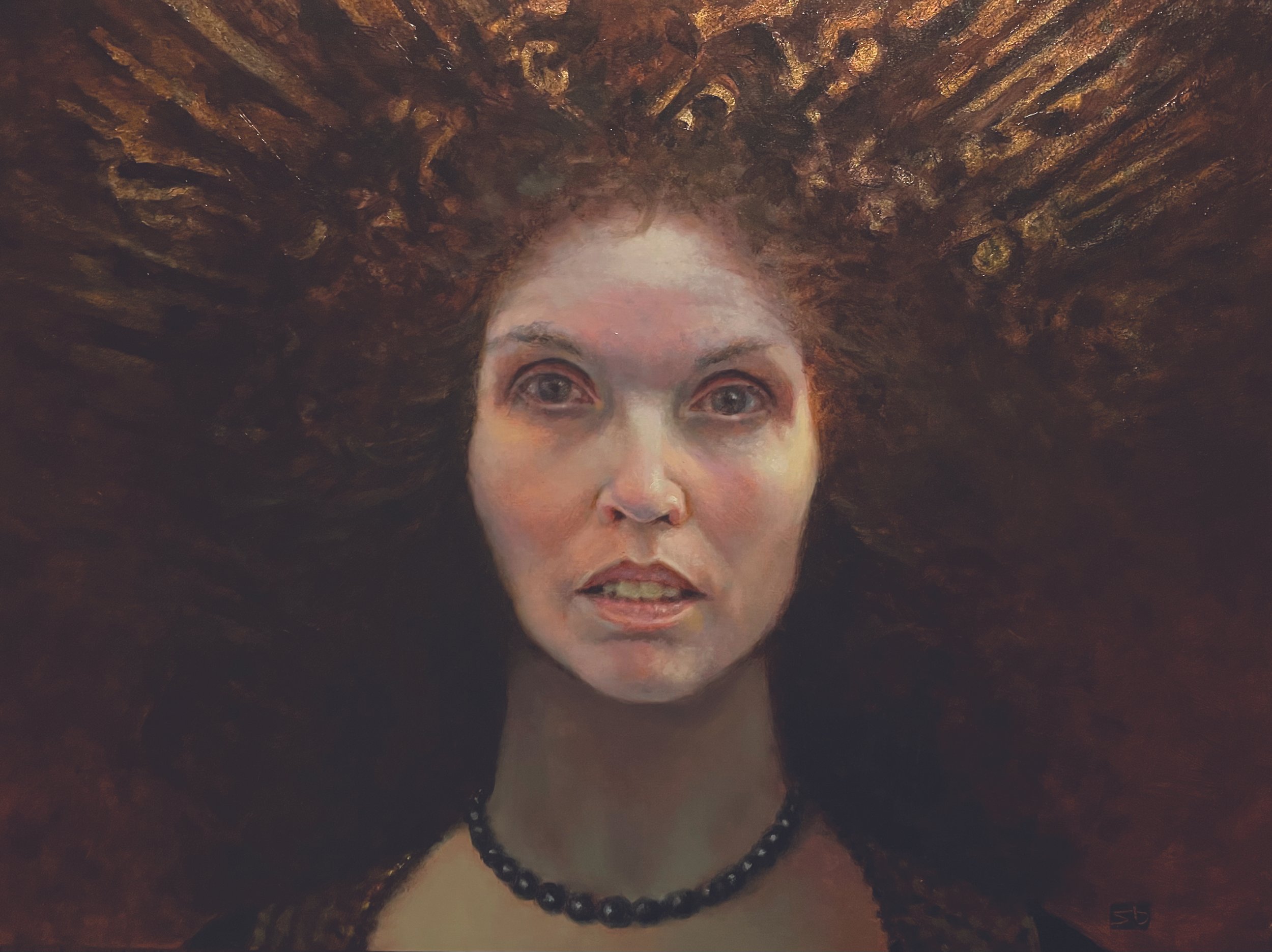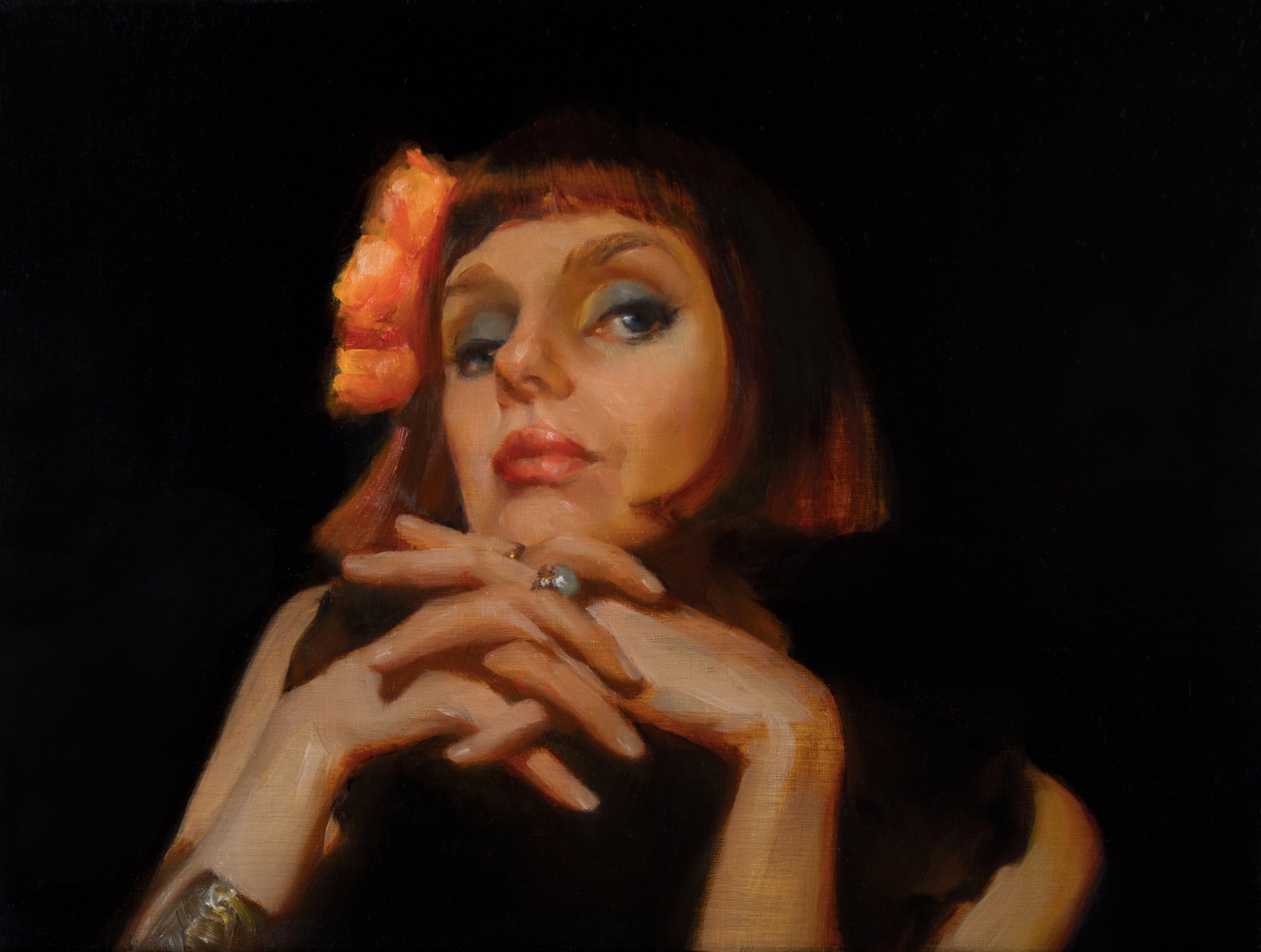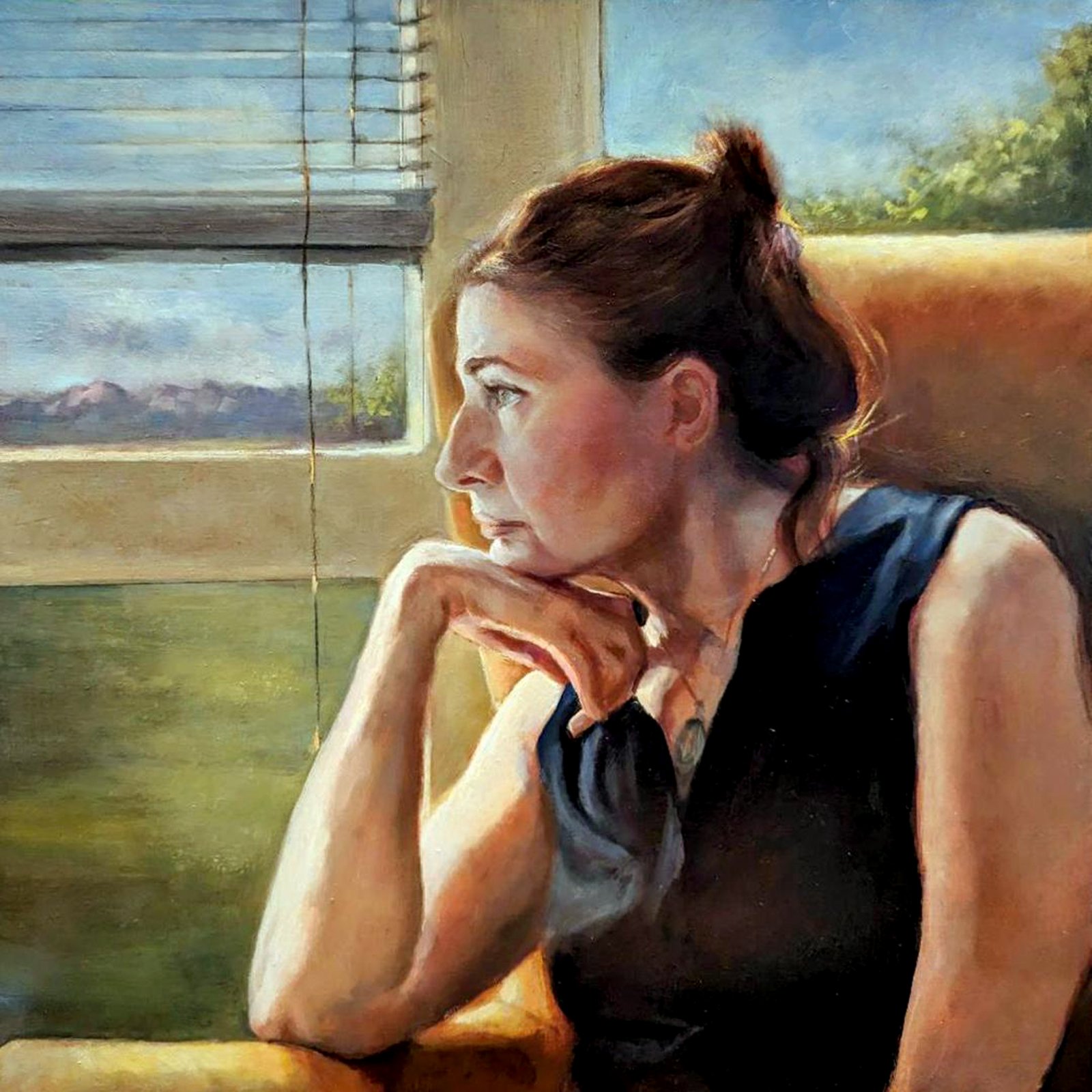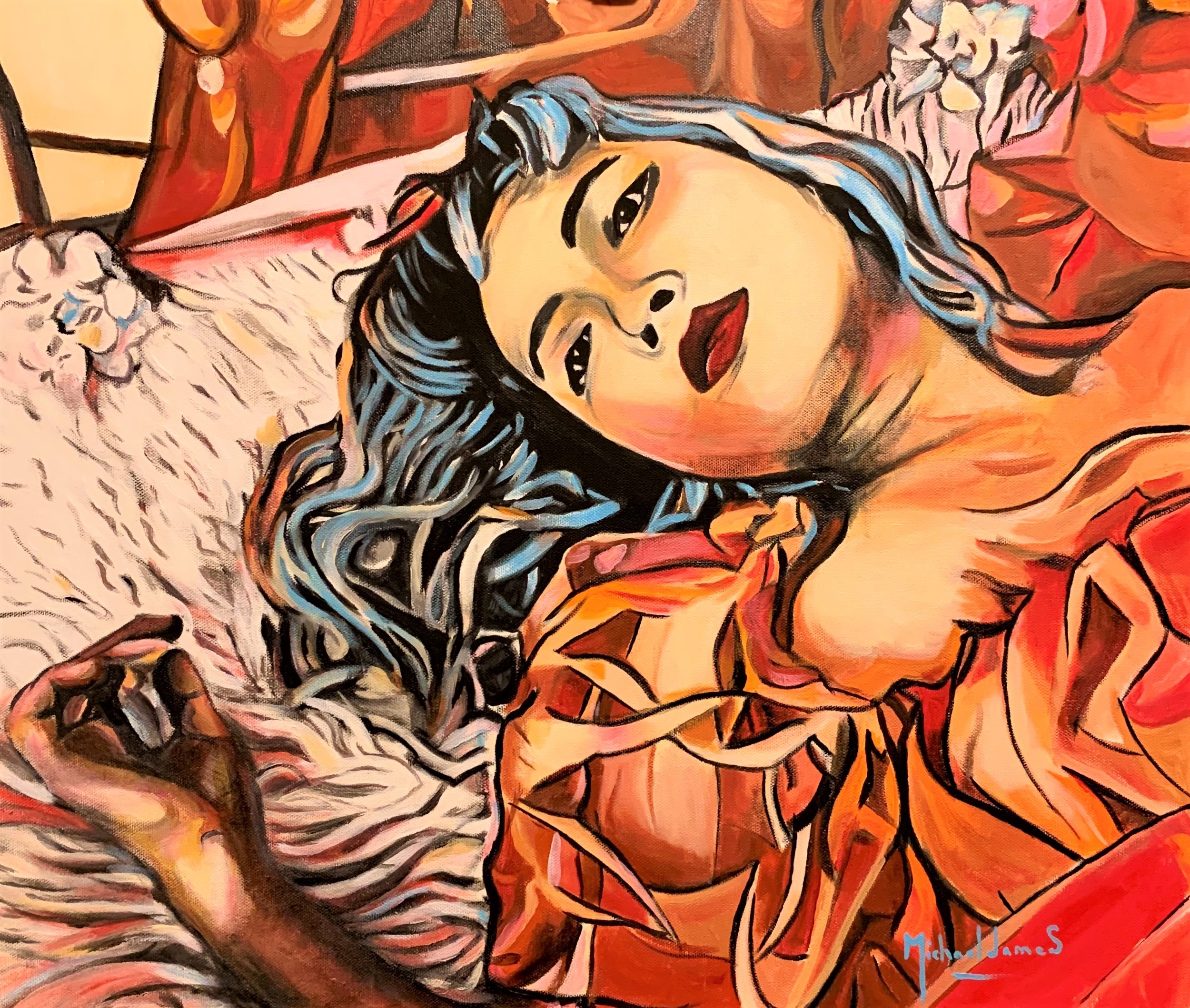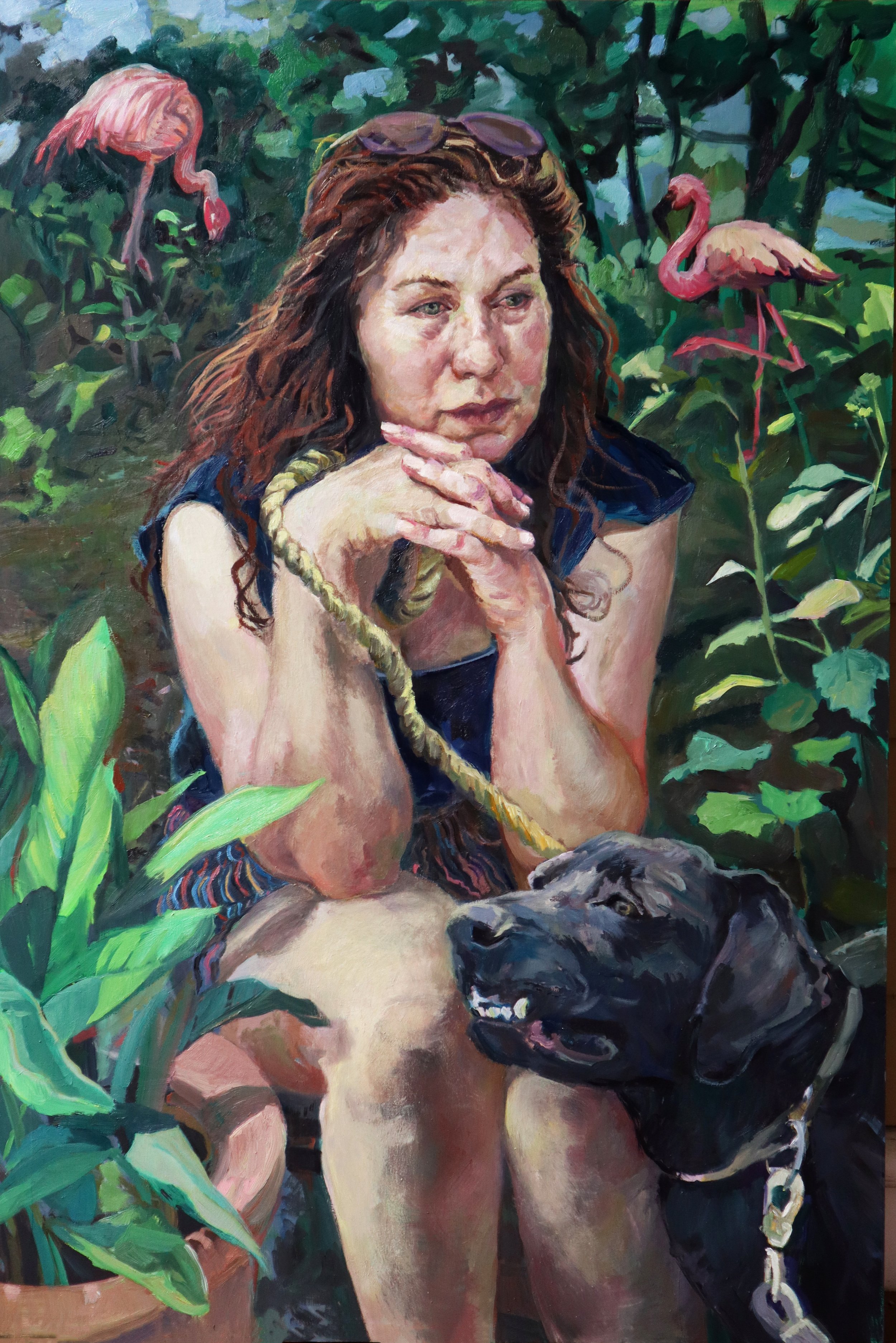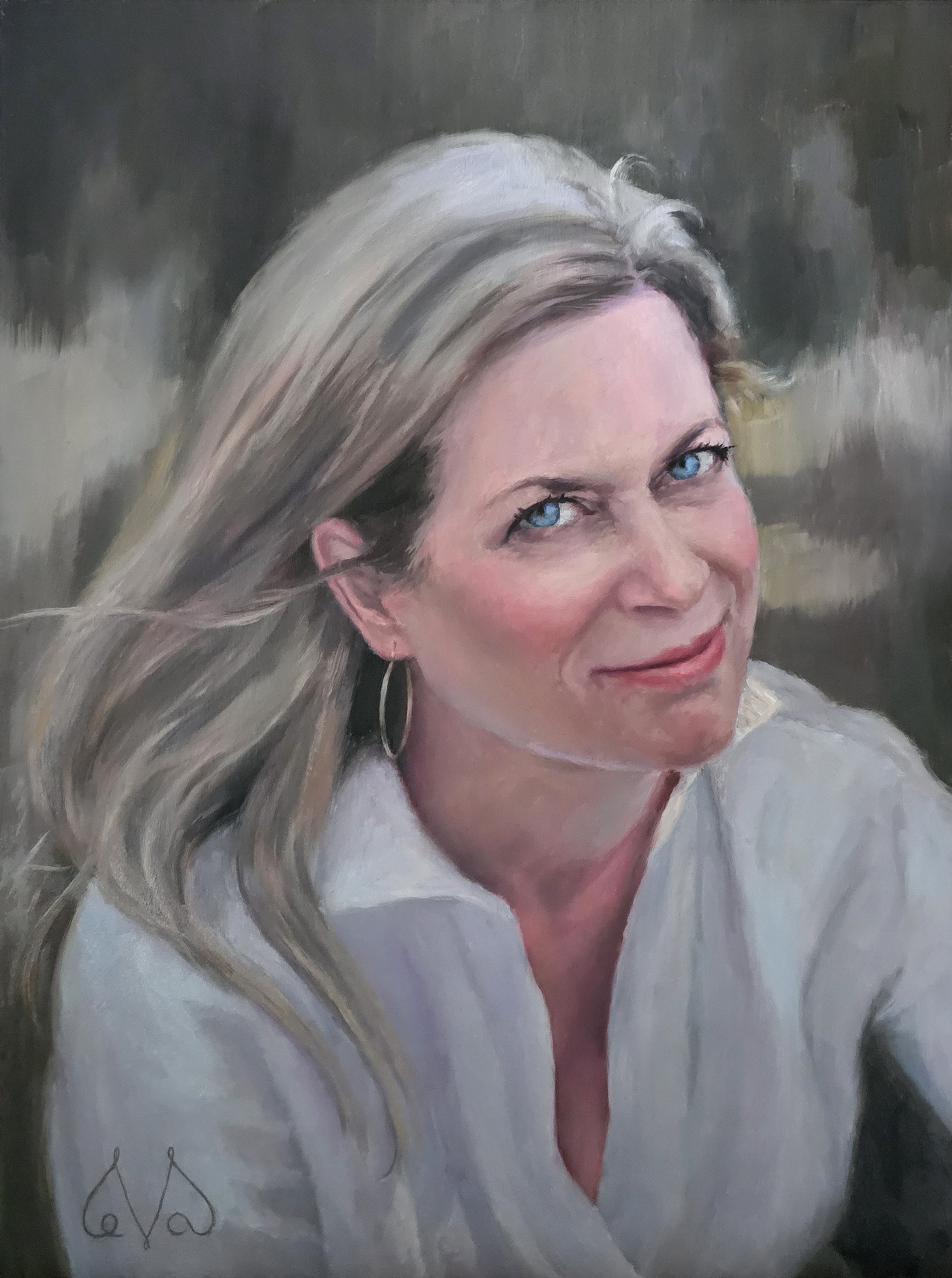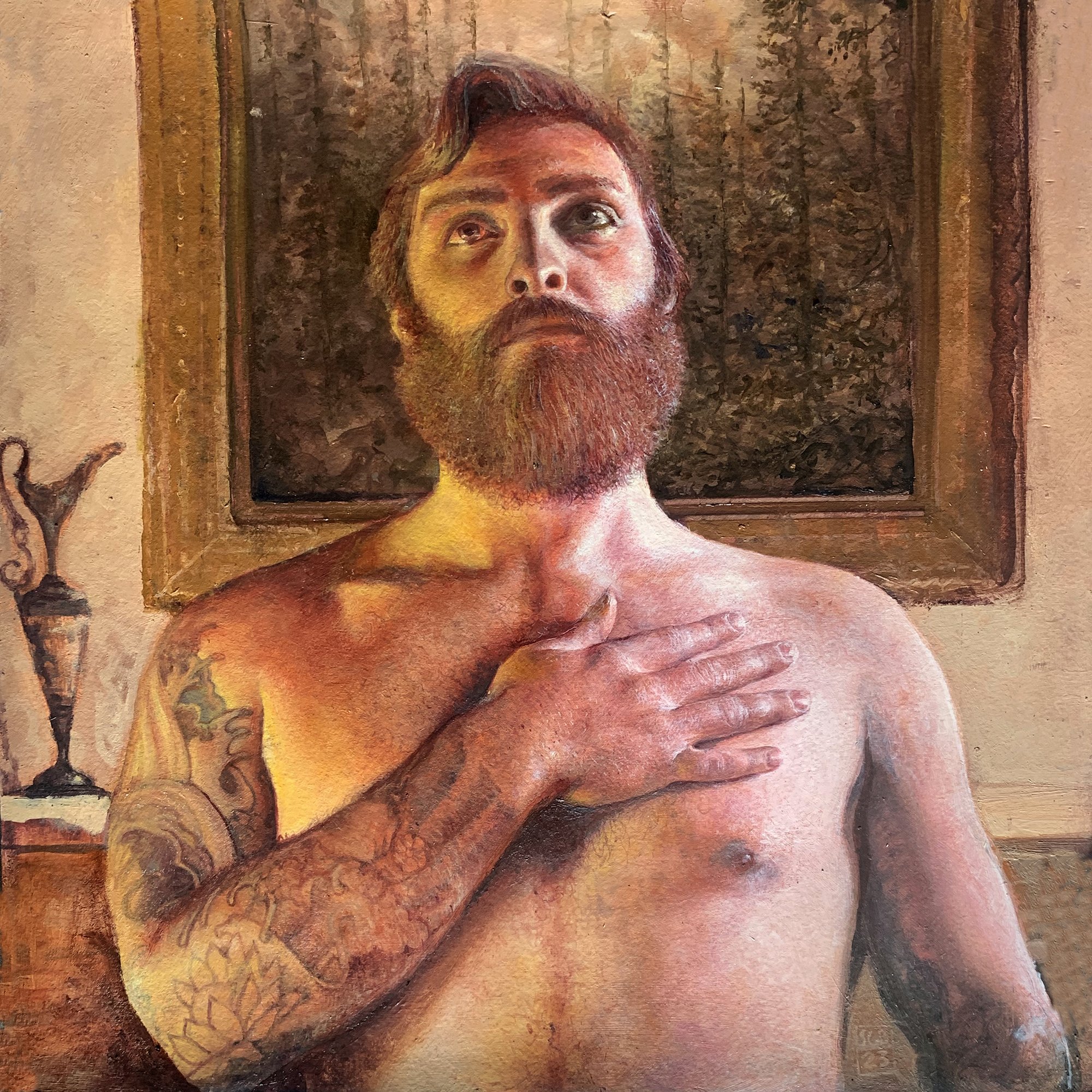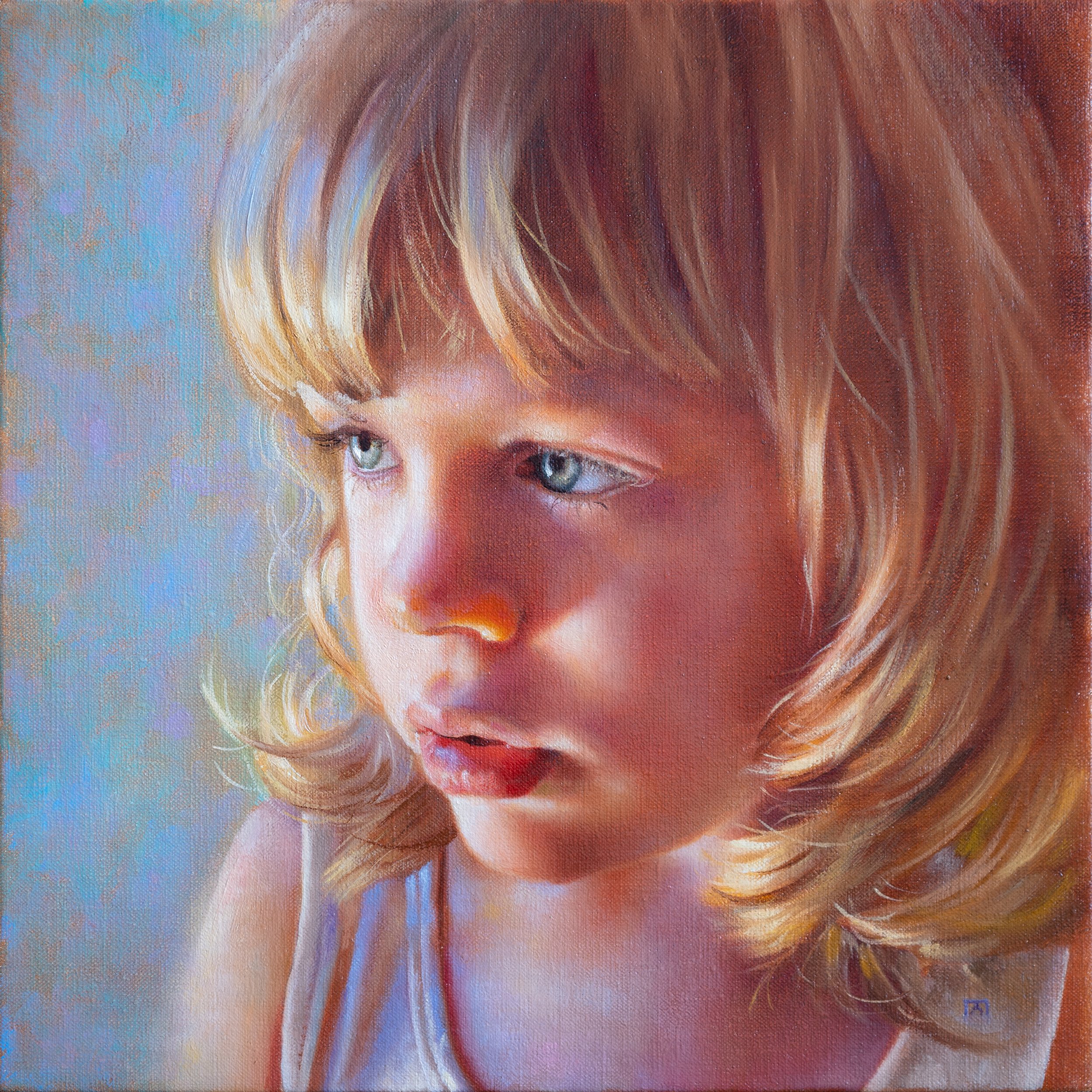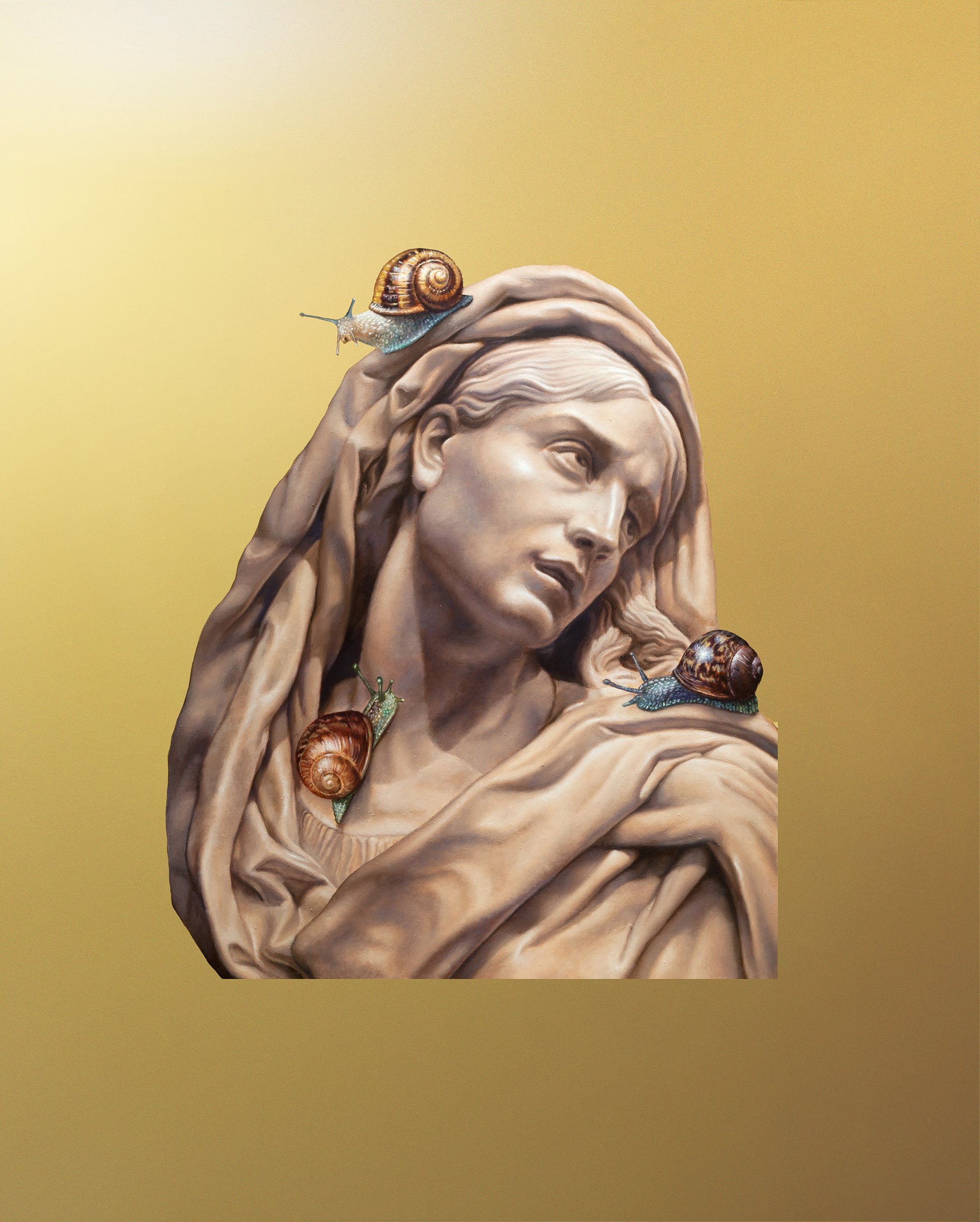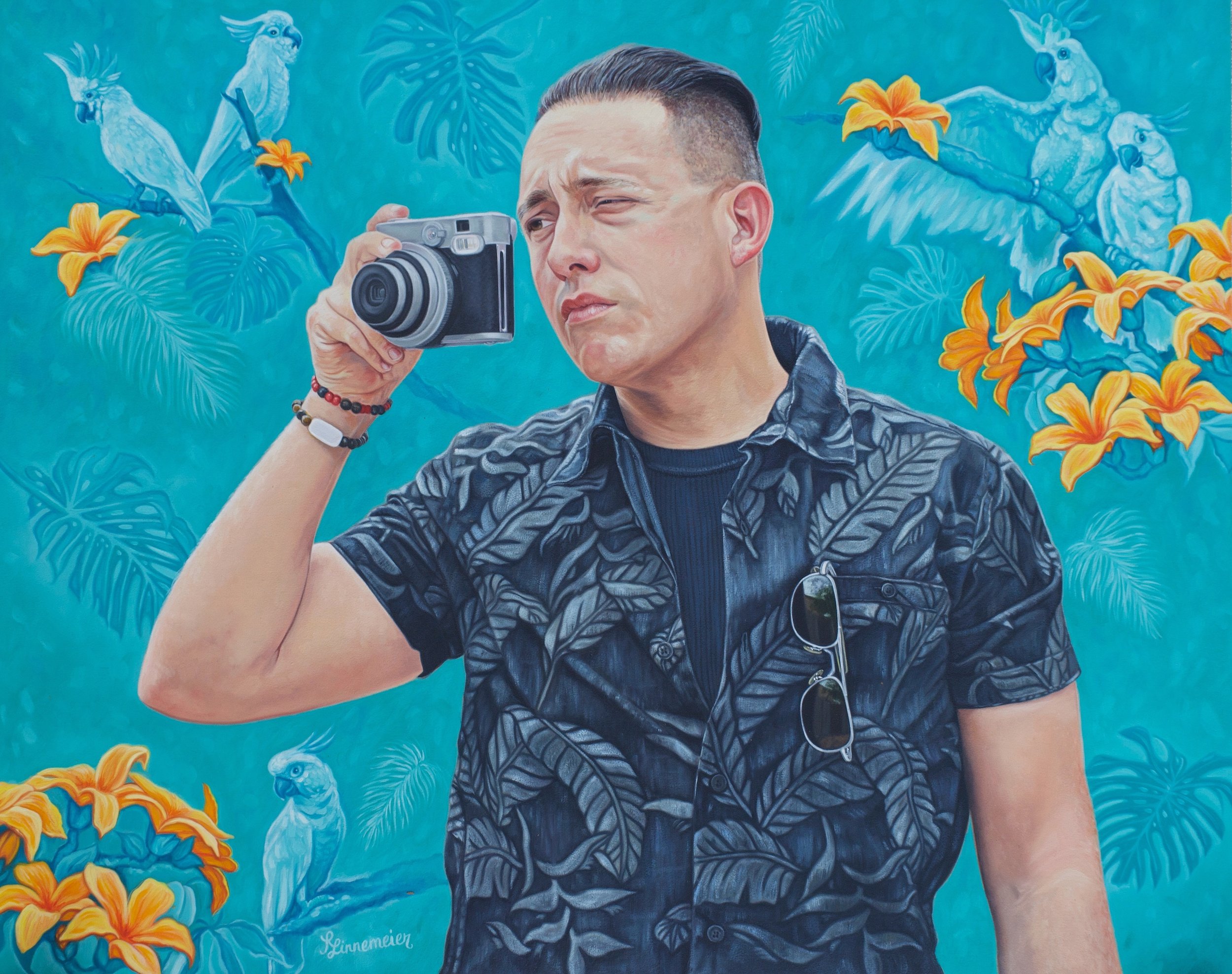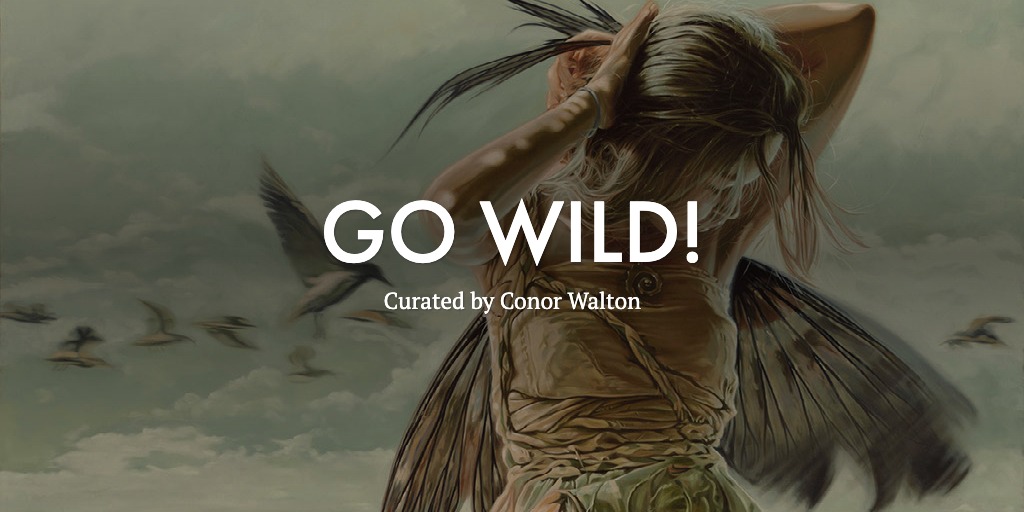Lukas Moll is a queer artist based in Cologne, Germany. His work is deeply rooted in the experiences and struggles of the LGBTQ+ community, aiming to bring visibility to themes like isolation, discrimination, and resilience. He also explores topics such as sexual violence and abuse, using art as a medium for healing and advocacy.
Read moreSusan Lim | Fine Art
Bio
Susan Lim was born and raised in Kuala Lumpur, Malaysia. She moved to the United States for college and graduated with a Bachelor degree in Film Scoring at Berklee College of Music. The entertainment industry was not a good fit, she then ventured into an online clothing business, her first love, and it lasted for 15 years. A devastating miscarriage in 2018 led her to taking art classes to alleviate her sorrow. She has been obsessed with everything art ever since and thinks that art saved her from that deep dark place.The pandemic lockdown in the year 2020 helped jump start her art career when she offered to paint portraits for a donation to Feeding America on Instagram. She painted 9 portraits of people and pets for that campaign. Her painting “Lean On Me” was a finalist in the animal portrait category at the Portrait Society of America’s members only competition in 2021.
Her favorite subjects are people, as there are so many stories untold within our faces. She has been creating conceptual and figurative art. She completed an underwater and floral series and is in the middle of creating another series with flowers and beauty. She believes that the world needs more beautiful art as we all strive to make it a better place.
Q&A
What's the purpose or goal of your work?
The goal of my work is to make people happy and inspired. I have a painting of a girl pouting when 3 hummingbirds were messing with her and her crown. It was in an exhibition in Laguna Beach for 2 months. When I see people walk away with a big smile, I know my work is complete. I want my work to also evoke emotion and take their breath away. Ideally, art lovers who viewed my work, should walk feeling happier or more inspired than they were before entering the room. That to me is success.
How has your style changed over time?
I used to paint with very precise and tight brush strokes. My paintings looked like photographs with a hyper realistic style. Over time, I realized that the characteristic that sets a painting apart from photography is its textures, unique brush strokes and painterly quality. It should also have 3 dimensional quality to it as if you can almost touch the subjects and that it’s not flat. Moving away from painting hyper realistic art, I now prefer to paint with looser brush work with softer edges.
What are your favorite and least favorite parts of professional art?
My favorite part of professional art is that it allows me to create work that is uniquely me, with subjects I love and am inspired to paint. I’m in love with the process of coming up with something conceptually, and then to complete the process by making my vision a reality with props and models. Every step is a joy to me, be it the planning stage, the photo shoot, everything in between and the finished painting. I’m simply obsessed with art and its creation. My least favorite part of professional art is the business side of things. Every artist might agree with me on this. We are creators, not business people. Plus, I’m also the worst at marketing myself and getting myself out there. It takes just as much time managing the day to day non art side of the business as it is to paint. Sometimes we spend more time on business than painting itself! Tasks like managing my website, sending newsletters, accounting, taxes, shipping and the constant struggle with sourcing the cheapest possible top notch supplies and materials for my work in this economy, can be a challenge to balance. These things take me away from painting, which I much rather do.
Do you have a network of other artists, and how do they support you?
It’s so important to be surrounded by supportive and positive artist friends. Because being an artist could mean having the constant self doubt and insecurity within us. The ups and downs of not making ends meet or the frustration of a failed painting. These friends could provide views from a different angle and perhaps ways for us to solve problems. A network of supportive artist friends means people to commensurate with as they understand what it is like to be an artist. Many people think art is a glamorous job and that it’s easy and only artists will understand what we as artists go through mentally and physically. Lastly, you need one or two trusted artist confidants/advisors. When we are frustrated with our paintings, these are people I trust for their artistic eyes to point out things that I may have missed when I’m stuck with a painting. You might have advisors who are not artists but still have great eye for art, though for me, my advisors are my closest friends at the same level I’m at.
How do you manage a work-life balance as an artist?
I try to find the balance with work, self care and time with my family and friends. It’s so easy to forget to take care of ourselves when we are completely immersed in art. I have to remind myself to have my meals on time and take breaks in between painting and work, to stretch and hydrate. I also make it a point to take time off on the weekend to spend time with my husband and friends. Lastly, it is important to be active and keep myself healthy physically, and to have enough sleep and rest everyday. It’s not always possible since we get into so many things in life, but I always try my best to adhere to a balanced lifestyle and schedule. I’m still learning to say no to things.
Describe your ideal working environment.
My ideal working environment would be neat and tidy with lots of storage space and stations for every task I need to complete on a day to day basis. I will have a large north facing studio with floor length windows or skylights, getting the most constant source of lighting. I also dream of a decent size space for photo shoots and have it double as an area to teach small groups of students. At the moment, I’m making it work with a small space I have, but one can only dream and hopefully make it a reality someday.
How has your education helped you in your career?
I was classically trained and took weekly classes on and off for a year. Then, I attended workshops with artists I love and admire, learning how to paint alla prima (wet on wet). There are so many ways to start and finish a painting. During this time, I have tried painting many different subjects from different artists. You name it, I tried it, be it master copies, still life, painting people, animals, landscapes… Having tried everything helped me discover what I love painting the most, people. And having the foundation on how to create an archival painting has helped me create work that will last many lifetimes. There was a point in time, I was copying my teachers as closely as possible, painting the way they do. But over time, I was able to move away from copying and build my own style of painting. It’s important for me to not lose my voice as an artist but to apply everything good into my practice in the studio and on set. It is so easy to become the “mini me” of these artists. I learnt to not lose myself in the process. If it doesn’t feel comfortable, it’s not me, don’t do it.
What was your first experience of working as a professional artist?
It was during the beginning of the pandemic in 2020. I felt the pull and needed to do something to help. I painted 9 portrait commissions for a donation to Feeding America. It was a great experience and it jump started my professional art career.
Tell me about a time you received negative comments or harsh criticism. How did you handle it?
There was a time when a viewer of my Mother Teresa’s painting commented that she does not have enough wrinkles on her face. I just laughed it off replying that Mother Teresa was not always old and wrinkly. She was once young and vibrant but always charitable and loving. I have yet to feel offended when people give me criticism. You can’t please everyone.
Describe a piece of art you are most proud of. Why?
I am most proud of my work “Reality”. It is the largest painting I have ever painted. It was a little nerve wracking to create such a large piece of work. Everything is larger than life, the frame, the panel and the brushes I used to paint it. With a total measurement of 47” x 76” frame included, I had to rent a van to transport it from my studio to the Laguna Beach’s Art-A-Fair exhibition. It was also the largest painting ever exhibited there and was everyone’s favorite. It is also in the finals of the Richeson 75 Figurative Competition and a semi finalist of the Art Renewal Center. Since Art Renewal Center partnered with the Lunar Codex, an image of this painting will be launched through a Nasa mission CLPS-TO-20A, via the SpaceX Falcon Heavy rocket and the Astrobotic Griffin lunar lander, headed for the lunar south pole in September 2025. To say that I am proud is truly an understatement!
Patricia Schappler | Evocative Paintings →
American artist Patricia Schappler is best known for her evocative figurative drawings and paintings. She combines realist and expressive traditions of observation, memory, and imagination, creating sprawling narratives of family life. Her work is characterized by strong lighting and expressive surface. Rooted in home; themes of birth, childhood, motherhood, aging, and partnering, recur. She is inspired by the complexity of human relationships and the bonds that hold them. Schappler is a native of New Hampshire with her BFA in Drawing from the University of New Hampshire, and her MFA in Drawing and Painting from Brooklyn College. You may see her work published in magazines which include American Art Collector, Pastel Journal, American Artist, Strokes of Genius, Manifest INPA and INDA, PoetsArtists, and Studio Visit. Schappler has exhibited nationally and in Ireland, and her awarded works may be found in both public and private collections throughout the States, India and China.
What's the purpose or goal of your work?
Most of my work begins with the desire to share a meaningful image and in that sense, connect with the viewer. I want to create moments of recognition whether through a familiar gesture, a quality of light, or the passage of time which reaches the viewer in a way that remains, so we join within the space of the work as friends.
Which art trends inspire your current work?
I look at contemporary realism and work from centuries past equally, swayed by quality, mood, and conviction. I love pattern and look at textiles from around the world and have been thinking more about connecting the spaces I’m interested in: nature/our planet, animals and the figure.
How do you manage a work-life balance as an artist?
Sometimes managing a work life balance is messy. I teach drawing and painting, paint out of a home studio, have four adult children just beginning families, and an extended family with both spectrums of newly born and far into the aging process. I exhibit as regularly as possible and don’t when I can’t. At the moment, I have work at WMOCA, and at the Dunfey exhibit, as well as online with 33 Contemporary. Within the next month, I’ll be exhibiting with Great Bay Community College, New Hampton School, and St Anselms College. Work balances with family, tipping to and fro depending on human needs, but art is a way of living and never far from my thoughts and actions. I have a lot of good energy, prioritizing home and community and within that, finding many subjects and points of inspiration.
What are your favorite and least favorite parts of professional art?
I love the process of thinking and doing, creating something from ideas and observations, moving materials in my hand, watching work come to life through methods and processes until something that wasn’t much becomes something satisfying, engaging… shared. The same applies to seeing works and engaging with ideas, feeling enlightened through another persons’ choices. Demands of social media and marketing are time consuming activities and add to pressure over deadlines, time which I’d prefer to spend in the studio.
What are your most valued skills as an artist?
I see with empathy.
Do you have a network of other artists, and how do they support you?
I have a small local group of artist friends…we comment on imagery, let each other know when competitions are coming up, try to attend exhibits where we have work from the group, hurrah each others’ wins, and in general help each other to feel a part of something a bit bigger than ourselves. I am also part of several artist associations and groups like PoetsArtists where even if I’ve never met the members, we feel like we know each other from our posts, our art work, our general enthusiasm for each other.
How can your work affect societal issues?
I’m not making work that directly affects societal issues and yet I cannot make work that isn’t about society, how I am feeling within it, where my concerns lay. I’m a woman, a mother, daughter, wife, instructor, artist, so many labels, but it comes down to creating images as a window into my life giving voice to experiences both of joy and sorrow, and, in the process, discovering domestic and heroic scenes are not dissimilar. I present figures through the lens of wonder and respect, the sharing of stories around themes of family, friendship, home … I believe when we recognize loved ones in others, we remember the best of what it is to be human, so perhaps I’m working on my own quiet revolution that celebrates humanity, resiliency and possibility.
Rachel Linnemeier | Complex Figures
Rachel Linnemeier’s subject matter includes powerful women in situations that both evoke strong feelings of nostalgia and inspire narratives. The overarching theme of Rachel’s work includes tension between the idea of modern adulthood and residual childhood. Each piece is composed of bright and vivid colors creating a youthful feeling while simultaneously expressing maturity through the pose and expression of the figure. Recent works have begun to explore the addition of landscapes to create complexity in narrative.
Add to your art collection @Artsy
Pauline Aubey | LEGO Art
Paulina Aubey uses lego bricks to create portraits who question our relationship to cultural icons through an interplay between abstraction and realism. Inspired by stained glass, she now adds some luminous effects to her artwork using a superimposition of matte and transparent bricks that she calls glazing. She mainly focuses on intimate close-up portraits that remain undecipherable despite close inspection. Her body of work is an attempt at alleviating the inherent tension between technology and mysticism. She is part of the Lunar Codex and a judge for Lego Masters France.
Chris Clark | Hair Culture
Chris Clark is a self-taught visual artist, illustrator, and muralist living and working in Jacksonville, Florida. Art, to him, is a form of journalism.
Using acrylic, oil, ink, and spray paint, he explores the rich culture and history of the Black community across the diaspora and the social issues affecting them today. For Clark, reflecting the human figure is very powerful, which is why he uses graphic-style portraiture and figurative works to depict Black life in America through his personal lens of a Black man. At the core of his work is the notion that representation matters. As the artist explains, “By telling my story, I want to help the viewer rediscover theirs.”
Clark’s artwork has been shown in exhibitions around the U.S. and abroad, including his recent solo exhibition “New Growth” at Kent Gallery FSCJ in Jacksonville and at the Nelson Mandela Metropolitan Art Museum in Port Elizabeth, South Africa. He has received multiple art awards and grants for his work. Clark was chosen to participate in the House of Sedulo Artist Residency in London, UK and the Chateau Orquevaux Artist Residency in Champagne-Ardenne, France in 2022-2023. Most recently he completed his first artist fellowship the DEAR (Digital Evolution Artist Retention) fellowship through the Caribbean Cultural Center African Diaspora Institute in New York.
Amy Ordoveza
Amy Ordoveza is a contemporary realist artist who creates detailed, imaginative still-life paintings. She carefully crafts and arranges the delicate cut-paper plants, animals, and architectural elements that she depicts in her oil paintings. The fragility of the paper objects suggests impermanence while Ordoveza’s close observation and meticulous handling of paint hint at their significance. Her compositions evoke a sense of beauty and mystery in ordinary surroundings.
Ordoveza received her MFA from the New York Academy of Art and her BFA from the Maryland Institute College of Art. Her historical influences include 17th century Dutch still life painters including Rachel Ruysch and Jan Davidsz de Heem as well as surrealists such as Kay Sage and René Magritte. Ordoveza’s work is included in the Lunar Codex and the Nova Scotia Art Bank and has been featured in publications and websites including American Art Collector, PoetsArtists, and Booooooom!
Artists Painting Artists | A Window into Creative Souls →
Diana Carolina Lopez | Kate’s Resilience, 2023 | Oil on canvas | 31 9/10 × 23 9/10 in | 81 × 60.8 cm
In the realm of painting, there's a profound beauty in artists painting their peers. This practice is more than just a mere portrayal; it's a tribute, an intimate dialogue between creatives who share a relentless impulse to express. The online exhibition "Artists Painting Artists" magnificently en- capsulates this concept, offering viewers a chance to witness one artist's perspective of another's essence.
Imagine a world where each brushstroke is an ode, where every color and line is a symbol of respect for a fellow artist's journey. In this unique form of portraiture, the artist is both a narrator and a participant, engaging in an unspoken conversation with their subject. It's akin to self-portraiture, yet here, the artist sees themselves through the eyes of another, providing an external viewpoint that is often enlightening.
The exhibition leads us through various narratives, each portrait unfolding a story that beckons us to explore deeper. There's a certain magic in the gaze captured by these artists. It invites us to ponder, to lose ourselves
in the depths of the subject's character. What lies behind those eyes? What stories do they tell? These are questions that resonate throughout the gallery.
Historically, the art world is rich with examples of artists painting their contemporaries. These portraits are not just mere records; they are tes- taments, eternalizing the honor and reverence of being the subject of a fellow artist's canvas. They forge a bond across time, connecting the past, present, and future in a continuous thread of artistic admiration.
As you delve into this exhibition, let each portrait intrigue you, drawing you into the narratives they weave. Each piece is a journey into the heart of creativity, a celebration of the artistic spirit that connects us all. This is not just an exhibition; it's a homage to the enduring bond between artists, a tribute to the shared passion that fuels their creative souls.
- Sergio Gomez, MFA
Erica Calardo
Erica Calardo is a figurative painter living and working in Italy. Her works in oils, watercolors, and pencils are windows on the solitude of lost souls. She explores the realm of Beauty, Grotesque, and Magic, by creating eery oneiric feminine figures who tell tales of long forgotten dreams, of an imaginary timeless past.
Deeply rooted in the Italian Tradition, her technique is inspired by the Renaissance and Mannerism old masters (Leonardo, Bronzino, and Lavinia Fontana above all). She is mostly self-taught and has learned her skills from old dusty books. She has recently studied academic painting with Italian master Roberto Ferri.
Since 2010, she has showcased her work in galleries in Italy (Mondo Bizzarro, Studio21), and abroad (La Luz de Jesus - LA, Auguste Clown - Australia, Modern Eden, Swoon, Flower Pepper, WWA, and Spoke Art, Distinction - USA, Pinkzeppelin - Berlin among others). Erica's paintings have appeared in several magazines and books, like Miroir Magazine, Beautiful Bizarre, Il Manifesto, Inside Art, Italian Pop Surrealism, Illustrati.
Ariane Kamps | 10 QUESTIONS →
1- What is different from your art work than other artists working in contemporary realism?
My work is different in that I tend to use a lot of punchy colors, lots of neons, etc and the subject matter is often centered around modern problems, mostly concerning how technology is affecting society on a spiritual level. My goal is to create modern mythologies.
2- How important is the process versus the end result?
The process means a lot to me, I enjoy a lot of the little things. I enjoy sanding panels of all things, gilding the edges with gold, little things like that. I'm always excited to begin a piece. That initial excitement is what carries me through the long process that becomes the end result.
3- What is your ultimate goal when creating contemporary realism?
I want to have a conversation with the viewer about our modern life, the choices we make each day and the world we're ultimately building.
4 -What do you like best about your work?
I like to creating little worlds and making peculiar dreams become reality. It helps me think about the issues we're facing when I can see it represented.
5- What do you do you like least about your work?
I dislike having to explain the meaning or inspiration behind the work because I often don't have a "message" attached to each work, just loose ideas that I wonder about when I look at each painting.
6 -Why contemporary realism?
I'm a very literal person, I get stuck on details which is useful in realism and I've found a safe haven in contemporary realism. I feel like the artists that work in contemporary realism are pushing boundaries and asking important questions, it really feels like an art movement that is alive and growing.
7- Which are your greatest influences?
I love the work of Frank Frazetta not only for his fantastical worlds and narrative work but also because, not unlike myself, he started oil painting later in life. He was very gutsy, and made being true to himself and his vision paramount. I also love the work of Mucha, Klimpt, Monet, and Waterhouse. In terms of living artists I'm very moved by the work of Kari-lise Alexander, Ali Cavanaugh, and Kristin Kwan.
8- What is your background?
I didn't end up going the conventional education route but much of what I learned was from fellow painters, workshops and what I could find online.
9- Name three artists you'd like to be compared to in history books.
I would feel honoured to simply be mentioned in a history book, I can't imagine being compared to any of the incredible talent out there today.
10- Which is your favorite contemporary realism artwork today?
I love this egg tempura piece by Julio Reyes. It feels timeless yet still contemporary.
Lorena Lepori | 10 QUESTIONS →
LORENA LEPORI
Lorena Lepori's figurative oil paintings have a narrative based on the representation of feminine figures beyond gender, relating to everybody who can express the power of femininity. She uses cross-dressing to reach out and create iconic alter egos to expand and embrace a hidden part of her models’ personality through look transformation. She relies on myths, fairytales and clichés challenging the traditional representation of the matters, re-introducing them in a contemporary setting, mixing old and new symbols to relate more with universal concepts.
What is different from your art work than other artists working in contemporary realism?
I believe intentions are what makes every work unique. Mine are unpredictable, sometimes. I am mostly inspired by personal memories, abstract feelings and references from movies and music I grew up with. This combination of elements characterizes what I produce.
How important is process versus the end result?
In my case the two are deeply connected. Once the right idea hits me, the creative process evolves quickly; subjects, backgrounds, outfits and props are already in the picture before I touch the brush. They are so clear to me, that ,rarely, I found something different from what I have planned on my canvas.
What is your ultimate goal when creating contemporary realism?
Make the viewers curios about the references and amuse them with the twist I like to add in the composition.
What do you like best about your work?
In the process I like the attention I give to the concept. In the end, I like to see the materializing of my abstract idea.
What do you do you like least about your work?
I would love to be more spontaneous, less obsessed with technical details.
Why contemporary realism?
I consider myself a pragmatic soul, but nothing trigs me more than realistic figures, amazingly executed, immersed in the abstraction of an idea.
Which are your greatest influences?
My very first love was Tamara De Lempicka, flamboyant colors and beautiful women in glamorous and swoony poses. I think I got my imprinting from her, and that would explain the focus of my attention into feminine figures.
Caravaggio, and his incredible dramatic work, definitively represents a level I have always aimed to. Last but not least, Gustave Klimt who stimulated my curiosity with his ethereal pale women, wrapped in symbols and flat fabric.
What is your background?
I used to be a cartoonist and illustrator in my twenties. Life drove me away from that world for several years. Only in my forties I went back to my original passion, and I started to train myself as a painter, with the help of artist friends and a lot of self-teaching. It is now 9 years that I am totally committed to oil painting. And I love it!
Name three artists you'd like to be compared to in history books.
I would love to see my name mentioned next to the three artists named above, that would be of course very ambitious and not very humble.
Which is your favorite contemporary realism artwork today?
A huge masterpiece by Sergio Martinez - The portrait of Desire
Michael Van Zeyl | 10 QUESTIONS
1- What is different from your art work than other artists working in contemporary realism?
I think my work looks different because I work in three picture planes, a foreground, midground and background and they are clearly separated by dimensional feeling. I like to play with texture and use color harmonies to push the near too far feeling. I think the individual elements of my paintings are realistic but the overall composition is imaginative.
2- How important is process versus the end result?
I spent so much time developing a process with oil paint using material surfaces that were mostly handmade. I hoped to create textures that were not seen before. Being a painting teacher, I surrounded myself with more people who were focused on technique and HOW to paint. When you have a show and you discuss your work with more non-painters you learn they are talking about and focus on the final image and WHAT you painted.
3- What is your ultimate goal when creating contemporary realism?
To paint my truth but ultimately connect with a wide enough audience which make my paintings immortal.
4 -What do you like best about your work?
It is a reflection of my thoughts.
5- What do you do you like least about your work?
How long it takes me to call it complete.
6 -Why contemporary realism?
Because when I walk out of every museum and art fair I visit that is the genre that stays with me and can’t stop thinking about.
7- Which are your greatest influences?
I’m going to go with the living ones because I had the opportunity to study with all of them starting with David Leffel then Steven Assael and weekend with Bo Bartlett.
8- What is your background?
I went to art school with a focus on illustration and design. I began painting after art school at the Palette & Chisel Academy where I was able to paint with dozens of great artists and talk art talk art 24/7.
9- Name three artists you'd like to be compared to in history books.
I like Vermeer for his thoughtful picture making, I like Thomas Dewing for his etherial quality and made up color harmonies and I like Degas because when you think of dancers you automatically think of him.
10- Which is your favorite contemporary realism artwork today?
Daniel Sprick’s Four Horsemen of the Apocalypse.
MICHAEL VAN ZEYL
Michael Van Zeyl is a full-time artist living and working in Chicago. His formal training began at the American Academy of Art, continuing on at Chicago’s Historic Palette & Chisel Academy. His art has been featured in several publications such as: American Art Collector, PoetsArtists, and American Artist magazine. Michael’s work is already appreciated in many public and private collections, such as the United States District Court, University of Chicago and was the 2014 recipient of the Dorothy Driehaus Mellin Fellowship for Midwestern Artists.
Q&A with Hyperrealist Matthew Quick
“A conceptual surrealist, I combine technical virtuosity, an inquiring mind and a love of storytelling, to make quirky, often humorous, observations on the world around us. ”
Featured in BRW as one of Australia’s top 50 artists, Matthew Quick began painting as a teenager before being one of the youngest students to study art at the University of South Australia. Upon graduation Quick joined Emery Studio in Melbourne, designing for major corporations such as Rio Tinto, Fosters and BHP.
After a prosperous career in design and advertising and having written a number of fiction books, Quick returned to painting in his mid 30’s. In the past few years he’s won, or been a finalist for, 70 national juried art awards. He’s had 14 solo and more than 80 group shows. His work is included in the permanent collection of Australia’s most significant museum.
CURRENT SERIES
Matthew Quick’s exquisitely created paintings turn a mirror on our contemporary online existence in his latest body of work The Mirror Electric. The artist’s visual commentary drives to the heart of the imagery that populates our social media feeds. Ricocheting from the amusing to the vacuous and absurd, his reading of the new visual shorthand of the online world is as sharp as ever. The mirrored surfaces and the ensuing interplay of one’s own reflection and the rendered surface of the painter’s hand is an immersive experience.
Q&A
What is your ultimate goal for your artwork?
All of the paintings are intended to engage the viewer with a narrative that operates on a number of levels.
At its most basic, it is intended to be intriguing, engaging and, hopefully, beautiful. However, it the viewer chooses to look a little deeper, layers of additional stories are revealed. Upon the combination of title and image, deeper meanings emerge, triggering the opening chapters to an endless array of stories the viewer is invited to create.
What concept or narrative is behind your work
The goal is pursue conceptual ideas that reveal societal issues and contemporary thinking.
This is achieved by subverting symbols images of power with irony and humour. Statues and monuments were my starting point, as they frequently map the rise and fall of Empires with overt symbolism, providing the foundation for a revisionist take on the notions of beauty, pride, and nationalism.
By replacing their crowns and thrones with ordinary objects, the aura of emperors and gods are demoting to powerless nobodies. Through ridicule, I play with their initial grandiose goals, querying their motivations and questioning the orthodoxy of accepted history. In doing so, I reference themes such individual freedom, social control, surveillance, and the deceit of rulers who intentionally fail to act as they speak.
Featured Artist: Pegah Samaie
What do you believe to be your roll as an artist?
Like many female realist artists, I have a passion to be a voice for myself and other women.Through all my paintings, I am looking for myself. They are from me and part of me. I am also representing the everyday lives of women who are isolated within their society. This isolation stems from powerful limits imposed on them by the culture at large—a culture they also define as mothers. I am studying and sharing their emotions and feelings in the form of lines and colors in my paintings. My ideas sometimes take the form of women’s pain or suffering and sometimes take the form of their pleasure.
What informs your work currently?
My paintings represent two main chapters in my life as they relate to women: one of oppression and one of opportunity. The first part covers my childhood in Iran, and the second covers my life after I immigrated to the USA and since I became a mother. Both phases provided impetus for my own introspection and discovery around what it means to be a woman. So, what is life for me as a woman? The meaning of life and my purpose for living used to be a mystery to me. They often still are, but now I use my past experiences consciously and subconsciously to express the reconciliation I am navigating with all the storms of my life and identity. I am recovering, reclaiming, and redesigning what it means—to me—to be a woman.
My art gives voice to the harsh experiences and societal constraints of Middle-Eastern women. It encompasses psychological aspects of their suffering under the oppression of government, religion, and men. As a creative woman, I faced much difficulty in my attempts to exercise any kind of freedom and independence. The first twenty-three years of my life in Iran were entrenched in wars, violent protests, and revolutions. The sum of these experiences shaped my ideology of life and art. My perception of the role of women in society is no longer ruled by submission or fate. It is sustained by the resiliency and strength of women. My discovery of these attributes in myself have influenced my way of talking about and painting women. I am looking to express this kind of freedom. I want to interpret and translate my emotions and experiences without fear of reprisal and even in the face of retribution. Painting is the expression of my internal emotions in response to the external world.
What is one of the biggest lessons painting has taught you?
Dairies, fragments, experiences, suffering, pain, happiness, and observations enable all artists to explore themselves. To understand better how surrealist artists approached the meaning of self, Chadwick provides this interesting explanation of self in Mirror Images: Women, Surrealism, and Self-representation:
We are born with a nuclear core of personality, which is the seed from which a cohesive structure called self begins to form during the second year of life. This process unfolds gradually through the interaction between biology and environment. The self under normal circumstances grows, matures, and remains flexible all of our lives. But first, all of its parts need to work in unison, as a well-integrated mechanism; only then can we sense our self as whole and not have to think about it. Otherwise we experience the self as unintegrated, fragmented, unbalanced, incomplete, even empty, and we go about our lives self-absorbed, attempting to sustain a sense of cohesiveness in artificial ways by attaching ourselves to someone or something we believe will provide the means to keep us whole. Without a sense of self, we attempt to establish self-objects, relationships that mimic the ones we had or wish we had in infancy, when we were as one with the people around us. (Chadwick 88-91)
When I stepped onto my artistic path, like many surrealist artists, I began to know myself and my paintings as mirrors of self, or as the reflections of my feelings in the response of the society. I started to paint my history and started to imagine myself in the free world. And then, I started to reflect myself in all my paintings.
What excites you about figurative art today?
I enjoy looking at subjective figurative art pieces that represent an artists’ feeling of life experience. They are rich with historical, realistic, or surrealistic meaning. I am attracted to stories and the opportunity art offers to silently express emotion to the outside world.
GO WILD! Curated by Conor Walton
There’s no blank spots on the map anymore, anywhere on earth. If you want a blank spot on the map, you gotta leave the map behind. ― Jon Krakauer
Inside all of us is… A Wild Thing. ― Maurice Sendak
Straight after I agreed to curate this exhibition, I sat down to dinner with my children and asked if they could think of a good title for a show. The first thing my thirteen-year-old son Daniel suggested was 'GO WILD!' and I thought “Wow! That's it!” As a title and a theme, ‘GO WILD!’ provides a context tight enough to offer coherence, yet loose enough to give the artists freedom to do what they do best. You can interpret it as targeting Nature in its broadest sense, or simply as an exhortation to take a risk; to unleash one's talent, express the Dionysian aspect of our natures. Both of these themes (and many more) came through in the work I have been offered, so I am delighted: overall, I think a bit of the zeitgeist comes through in this show.
In many of these paintings our relationship with Nature is obviously an underlying issue, but one which presents itself in many forms. In Rachel Linnemeier’s Camera Click it takes the form of ironical detachment. The subject of the painting stands heroically, camera in hand, apparently seeking Nature and ready to ‘capture the scene’, and yet the Nature he seeks already appears reduced, processed, flattened. The painting seems to comment upon the way so much of our experience of the world is now packaged and mechanically mediated. There is humour in this painting, but also melancholy; a sense of lost directness and authenticity in our relationships, both with that which is ‘other’ and with our inner selves.
Childhood is a recurring theme, which for many of us appears to stand for a time when we were closer to Nature, more spontaneous and whole, and wilder. Dana Hawk Heimbach’s Wildlife “is about being a kid immersed and one with nature.” Serena Potter’s Night-timers are adults escaping into an infantile world of spontaneous fun and irresponsibility. For Linda Tracey Brandon in Capture the Flag, childhood represents “that brief juncture where fantasy and innocence intersect with the wild, reckless freedom of living in the present moment.” These words are also appropriate for the child in Cynthia Sitton’s She Delighted in Them: living in her fantasy, unaware of the approaching storm behind her, it is, according to Sitton, “a love letter to my ill daughter”, and infused with a wistful sense of adult suffering and regret.
Some of the artists have used the nude as a way of articulating our animal natures. Susannah Martin's provocative image Schmetterling (‘Butterfly’) is the quintessence of Dionysiac rapture. In Tina Garret’s Baptism, a female bather evokes the pleasure of skinny-dipping; momentarily shedding inhibitions and finding peace through immersion in watery nature. In Denise Fulton’s Camouflage, the woman hides in plain sight, her form broken up by dramatic shadows. She eyes the viewer like a wild animal (though it’s not clear whether she is metaphorically prey, or predator waiting in ambush). Sarah Lacey’s exquisite drawing Cygnus finds analogies in human and animal form, in this case between human and swan. As she says:
Organic form - the way nature grows and shapes itself - is deeply playful and fractal, and shapes repeat, mirror and metamorphize across forms and species. My model’s bone structure, particularly in the shape of her collarbones, reminded me of the curve of a swan’s outstretched wings. I wanted to bring those shapes to life as a physical manifestation: her daemon, her familiar, an extension of her spirit and power. She is the swan and the swan is her. We are not separate from Nature, we are Nature.
In exploring the contested borderlands between human and animal, ‘civilised’ and ‘primitive’, several of the artists in this show have rediscovered the power of mythology. Adam Miller's reworking of ancient mythological themes of violence and transgression, suffering and rapture, seem intent on reconnecting us with our deepest natures. For the hunter Actaeon (whose punishment for seeing the Goddess naked is to be turned into a stag and torn apart by his hounds) insight comes at a terrible price.
An inevitable consequence of reinvigorating of the mythopoeic imagination appears to be the rediscovery of Tragedy, all too apt for the coming age. Indeed, my wager on our dawning epoch is that (contra the superficial optimism of our ‘official’ culture) only a sublimely tragic art will do it justice. In these works, I see its first awakening.
Like Miller, Luke Hillestad brings continuity of human and natural form in a mythological direction. His Medusa, half-animal, appears not as an object of terror but of pathos and desire: in its way it too speaks of our situation in which wild Nature appears less fearsome and monstrous than beautiful and suffering. This Medusa stands like an endangered species; the carrier of an intuitive, poetic wisdom entirely at odds with the technocratic logic of our civilisation.
Molly Judd | Raskolnikov | 140x150 cm | 2019
Molly Judd is a young Irish artist snapping at her elders' heels with whom I seem to have an unwitting relationship of common themes. When I first saw her Raskolnikov I was so happy she hadn't called it Flogging a Dead Horse, because I am working on a painting of this title, and close enough in theme to hers (which I take to be ecocidal guilt, shame at our criminal treatment of Nature) in Molly's case raised to the level of sublime metaphor.
I’ve long been fascinated by Martin Wittfooth's depiction of a post-apocalyptic, post-human world in which a degraded, mutant nature recovers amongst the ruins of our civilisation. Wittfooth’s imagery is striking for its anti-humanism: ostensibly the human image is banished from his art and animal nature reigns supreme. Yet the physical or metaphorical detritus of our culture is everywhere in his world and the satirical force of his work is clearly premised on our species’ collective insanity: Wittfooth’s imagination is wounded, angry and feral.
Both directly and indirectly, many of these paintings bear witness to the planetary catastrophe unfolding around us, and the need to recover a sense of human identity in which Culture isn't opposed to Nature but unfolds within it. This is, I think, what gives some of the best contemporary figurative art - naturalistic in technique but using dream, fantasy, metaphor to plumb our psychic depths - its current impetus and urgency.
All these artists combine old-master virtuoso techniques with a contemporary sensibility to produce paintings that, in sum, tackle almost every subject, from the painfully or joyfully private to the great public issues of our day: politics, ecology, the fate of our civilization and our planet. If an artist's job is to give us images through which we can better understand ourselves and the world, this is exactly what these artists are doing. I think there's a huge appetite today, particularly among the young (and in the context of an often shallow, consumerist pop culture) for an art that isn't simply brash or slick or clever, but that speaks to our deepest desires and needs: for truth and beauty, and above all, for meaning.
There are many treasures to be found in this little collection of works, for those with eyes to find them! Expect to be provoked, teased, caressed with beauty, troubled with insight. You deserve nothing less.
FORMATION
Thanks to David Jon Kassan for the live broadcast of FORMATION, January 12, 2017.

















